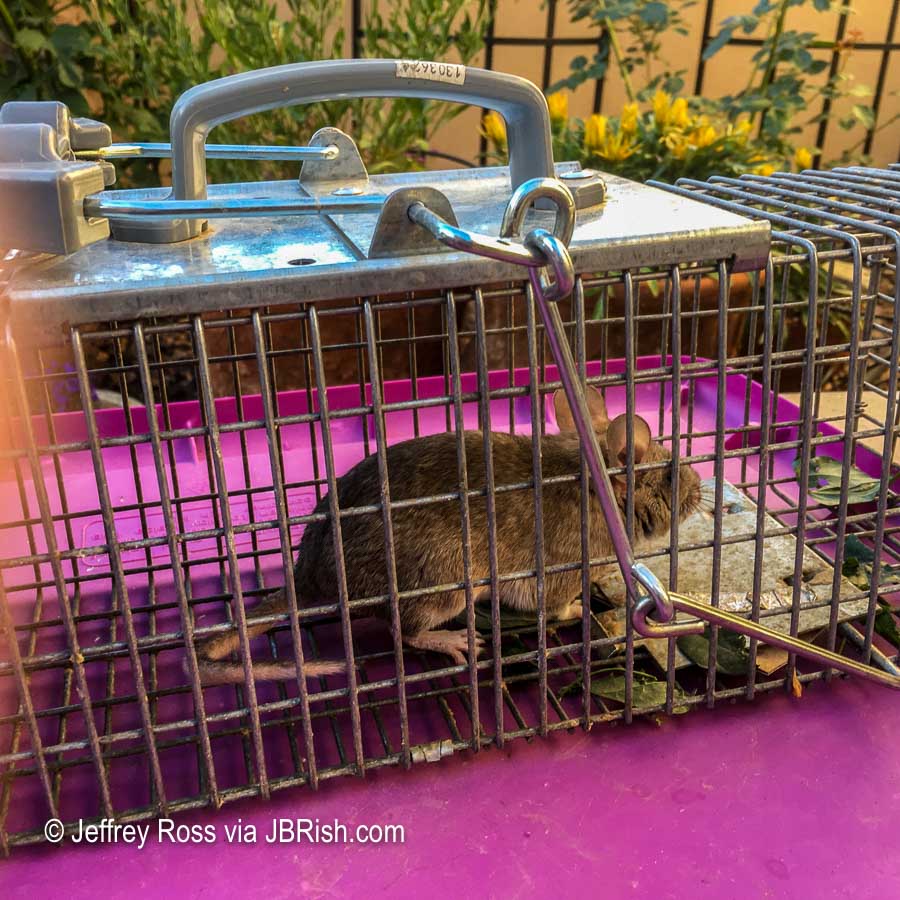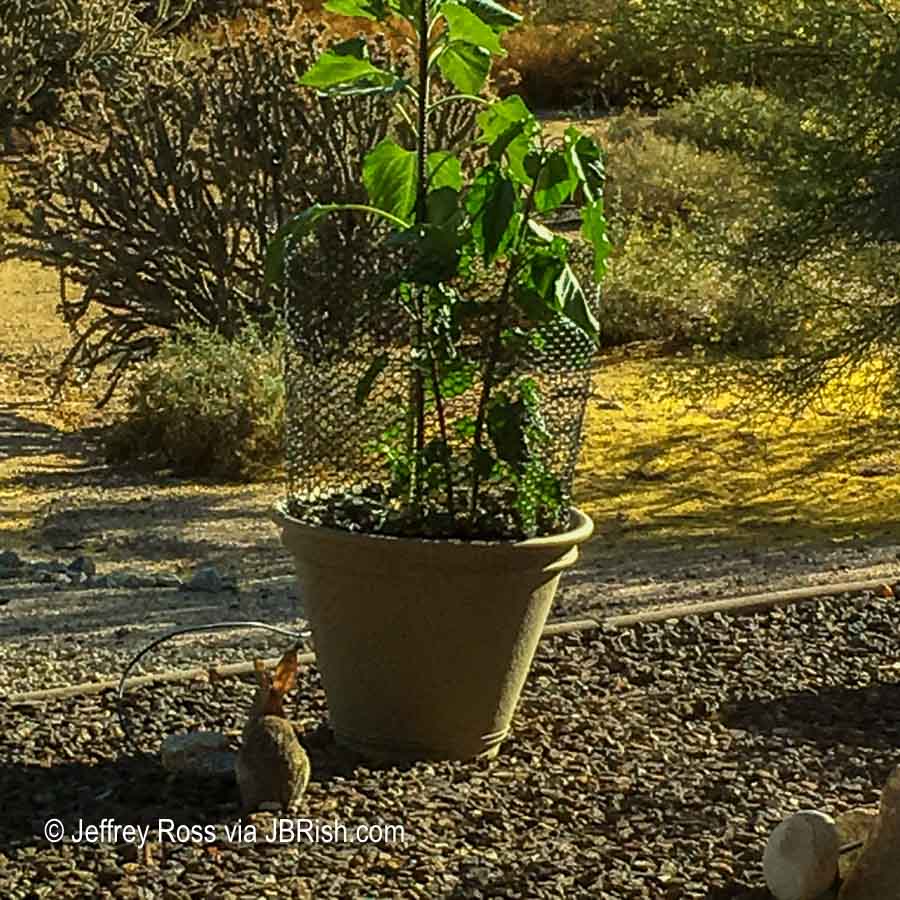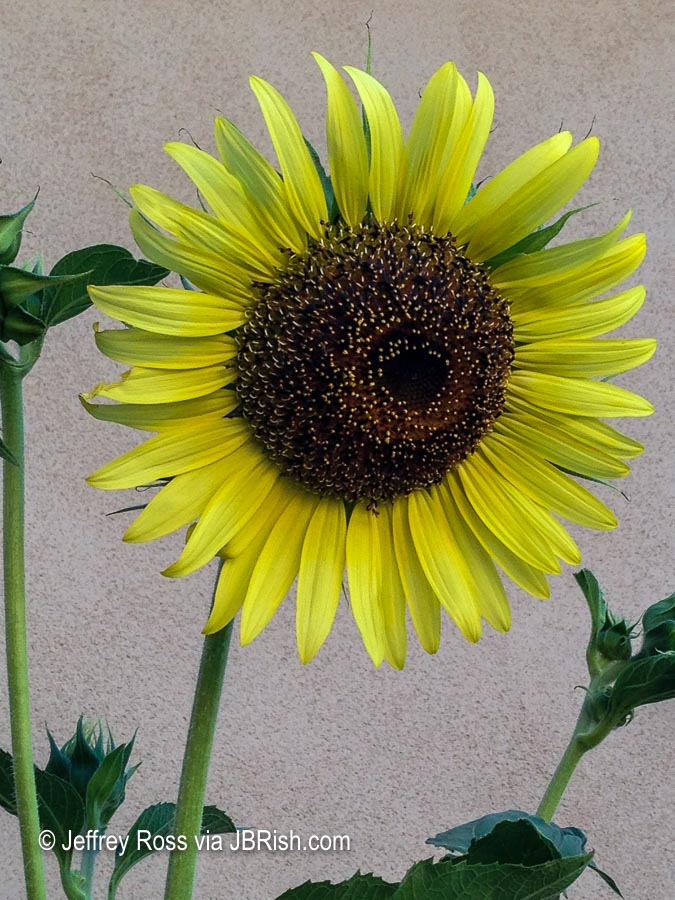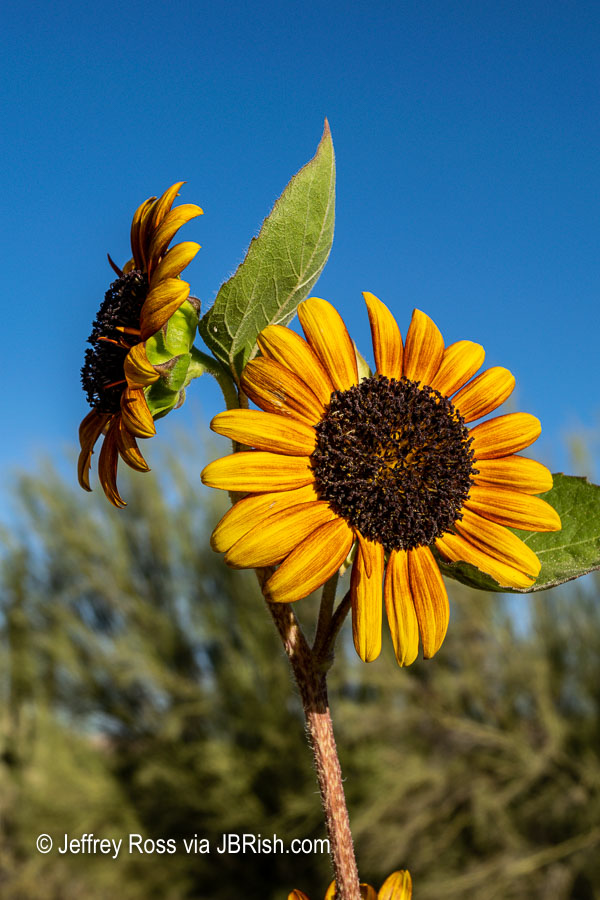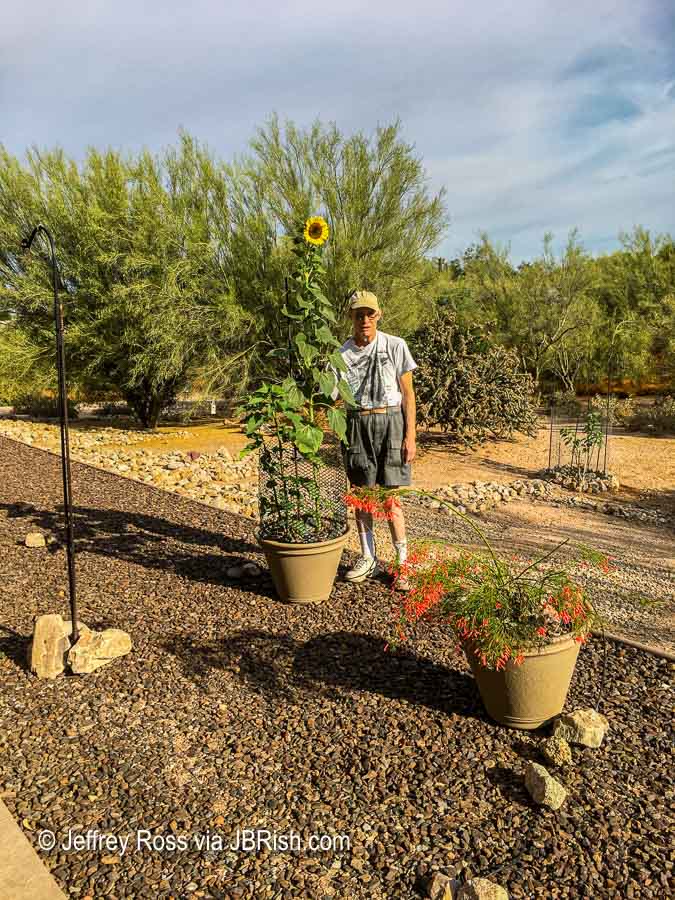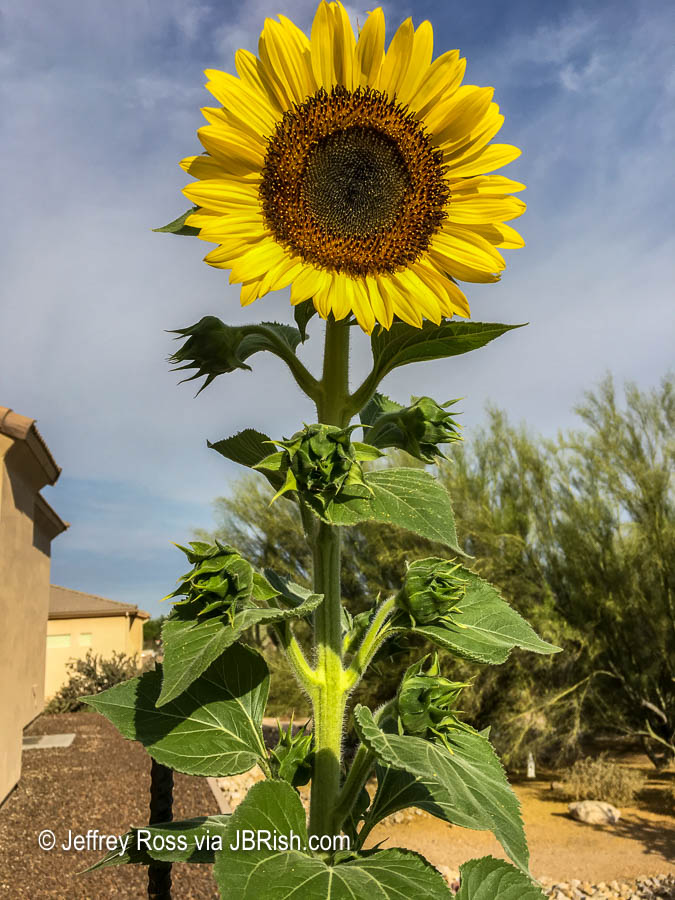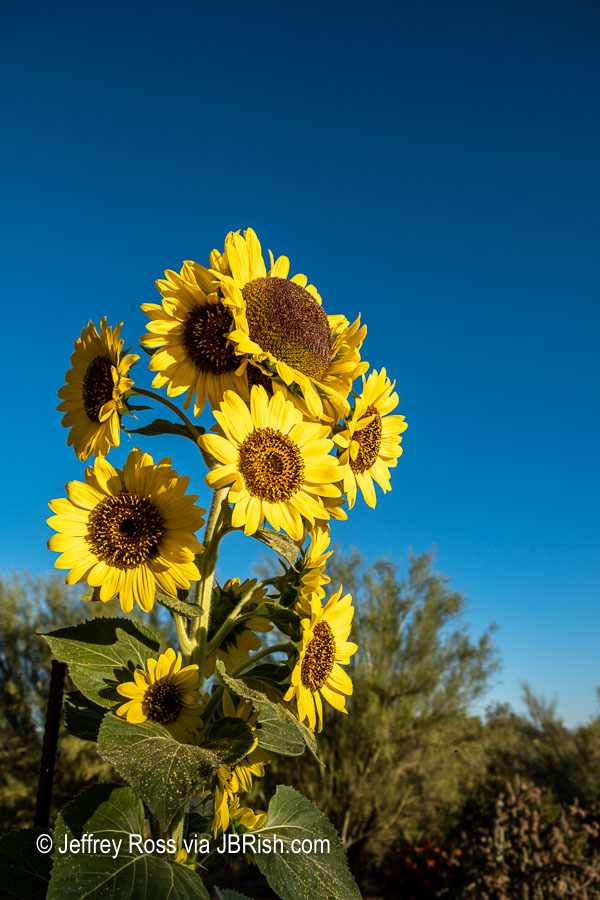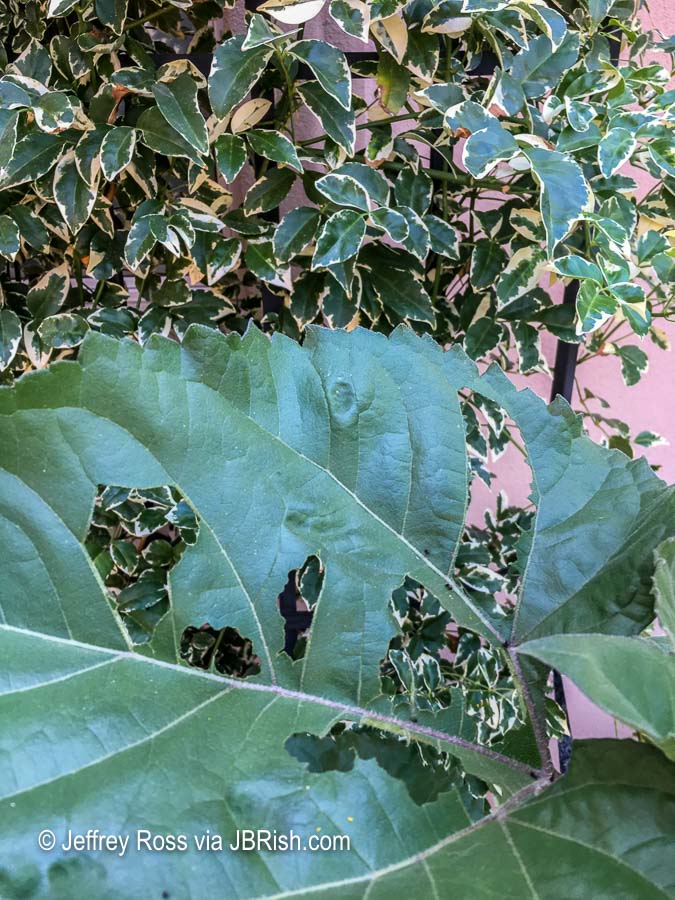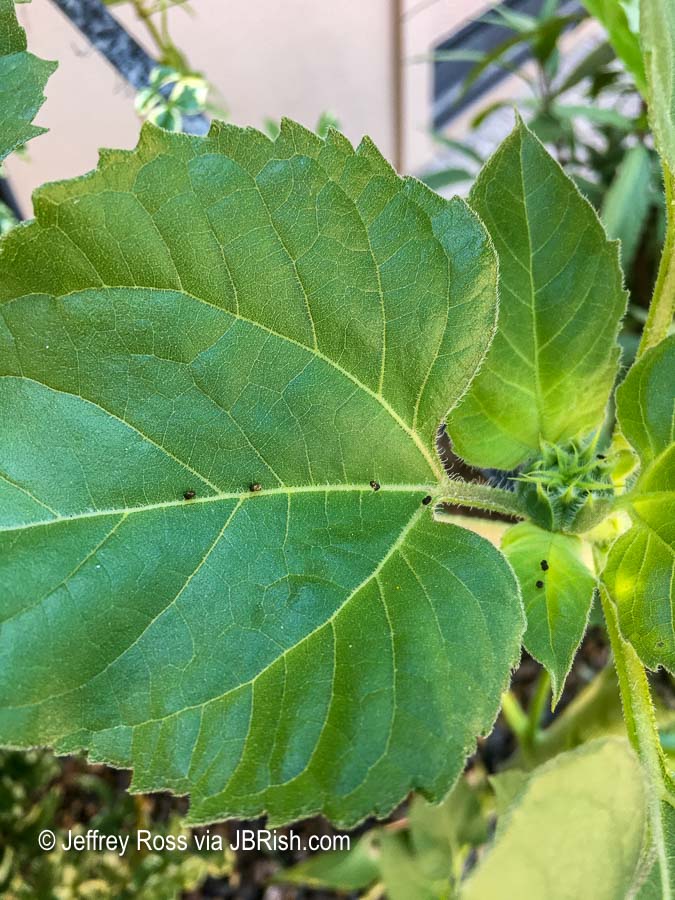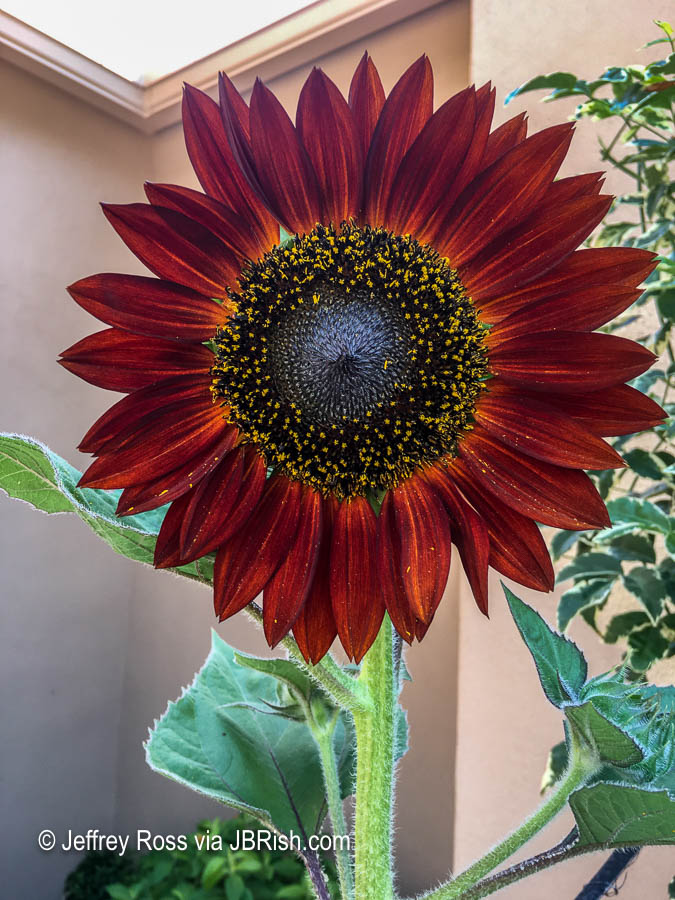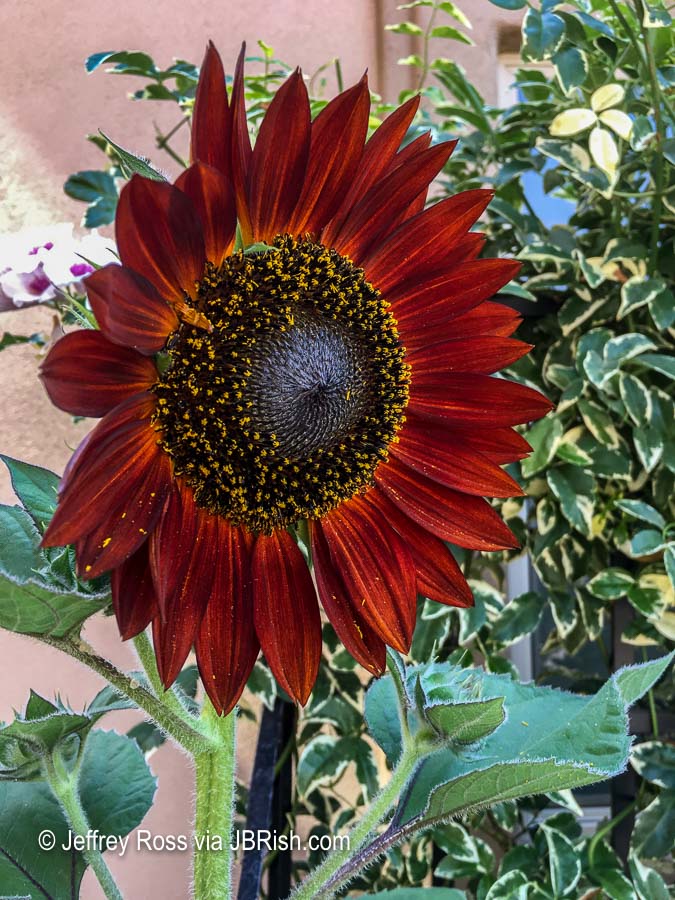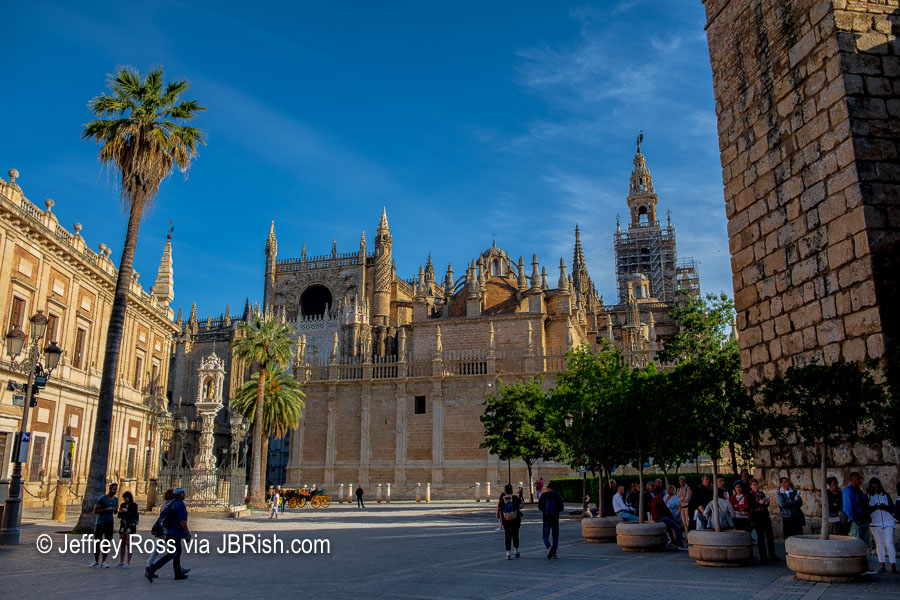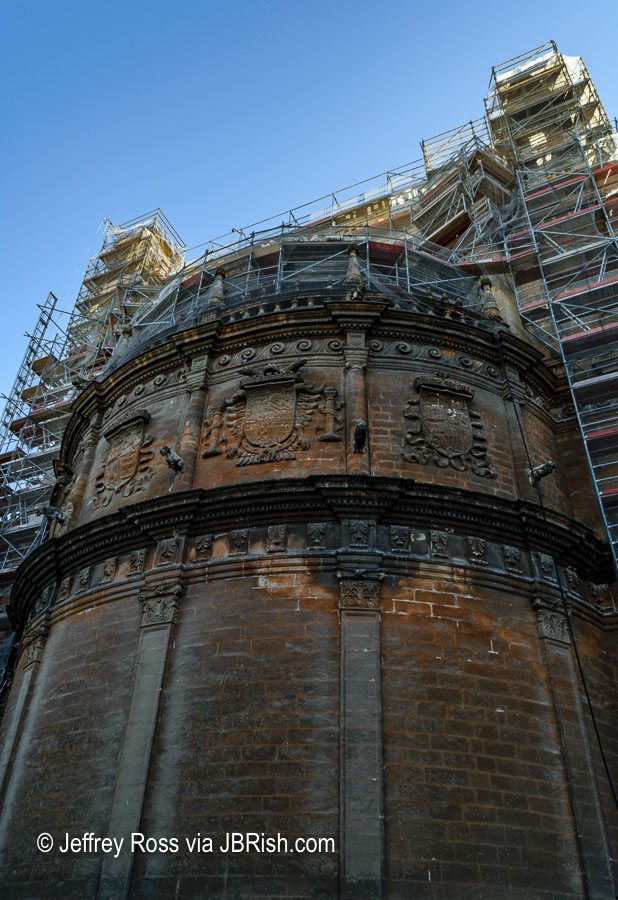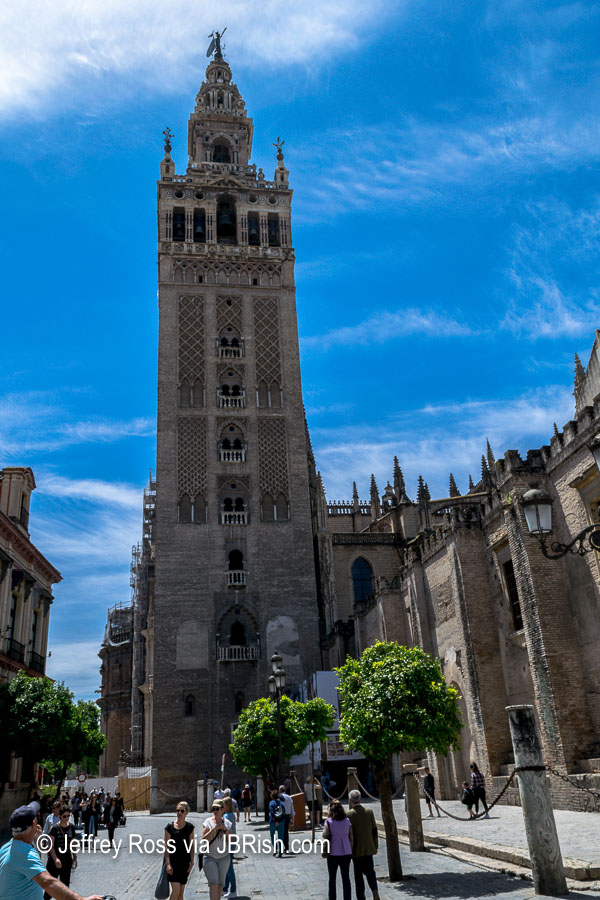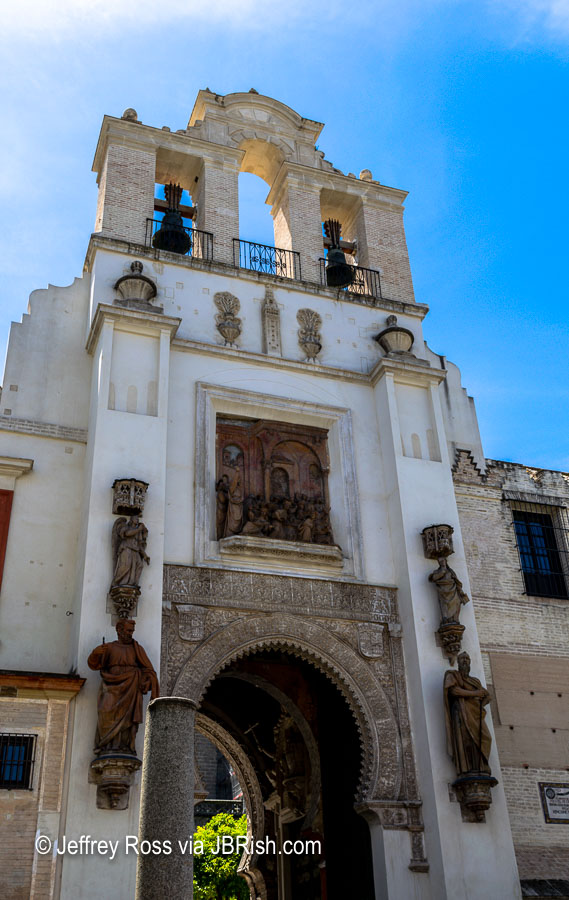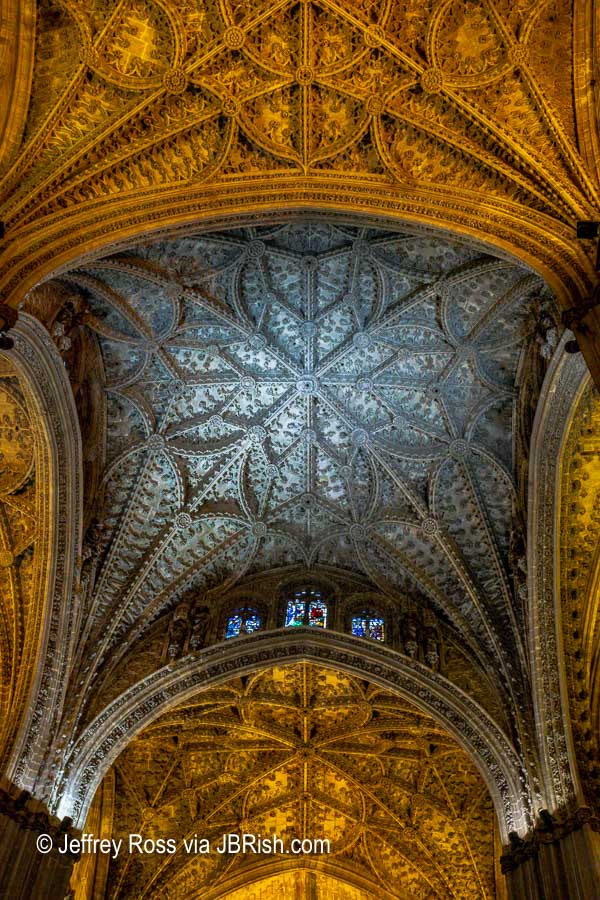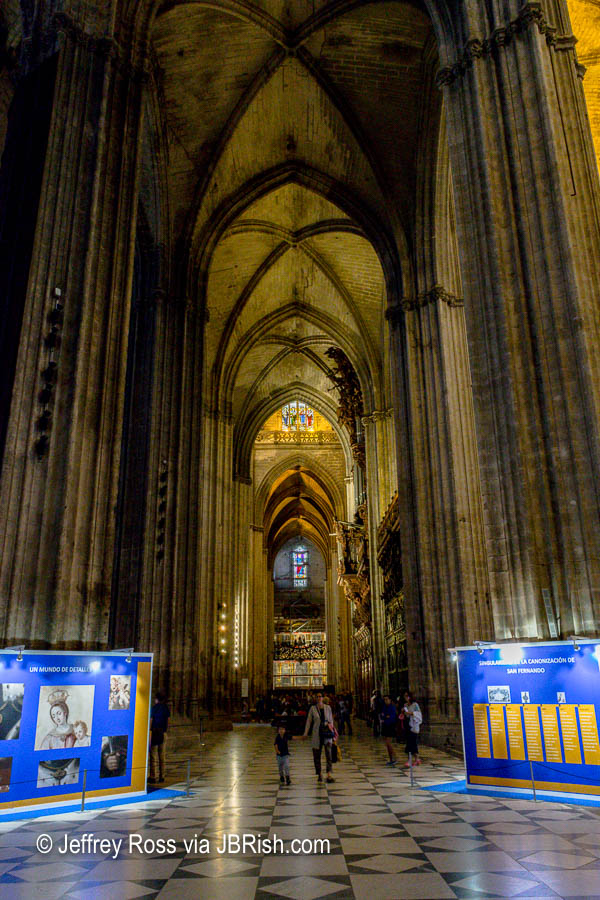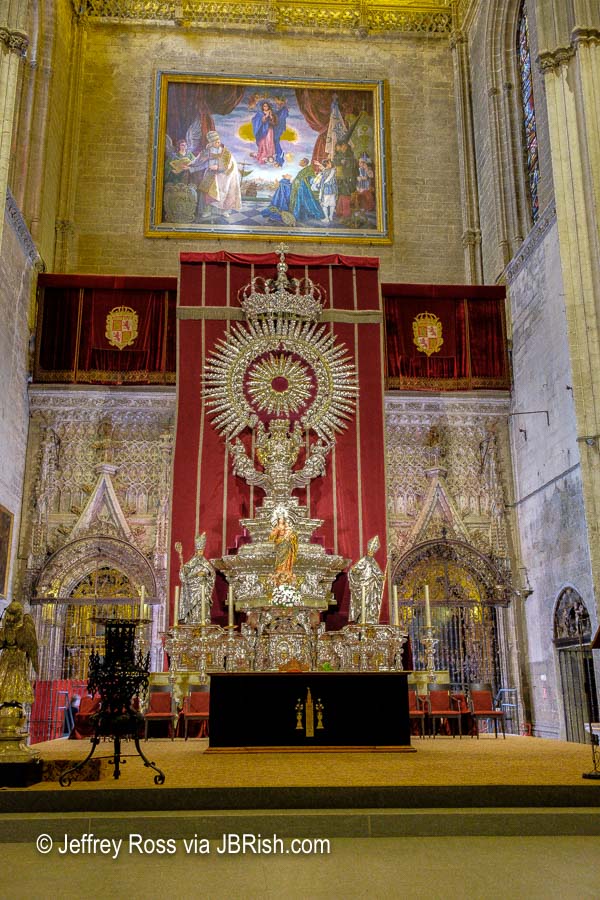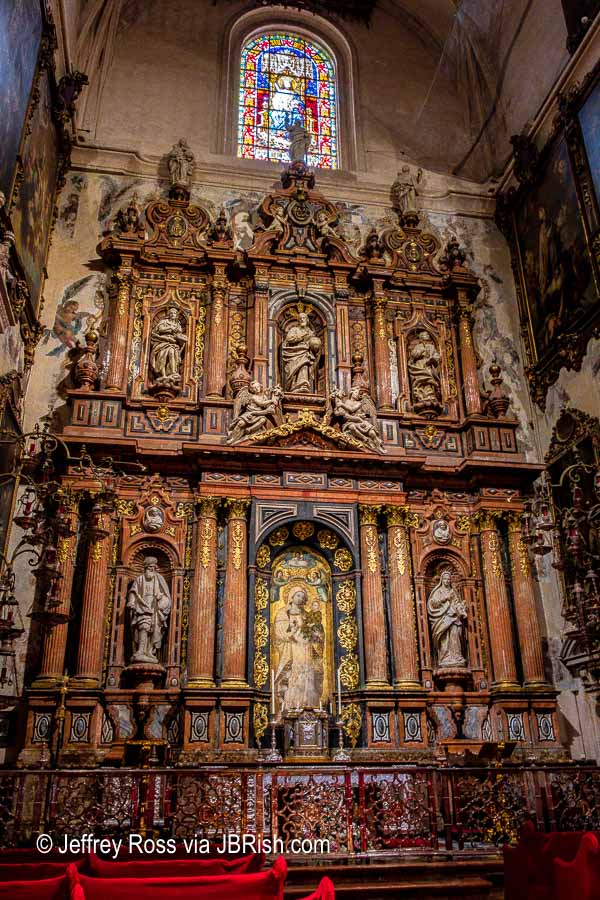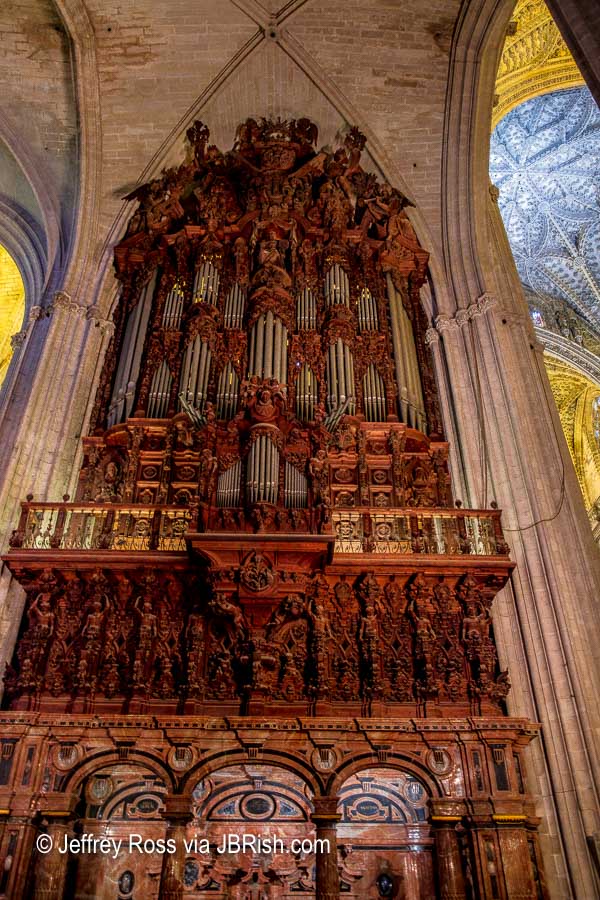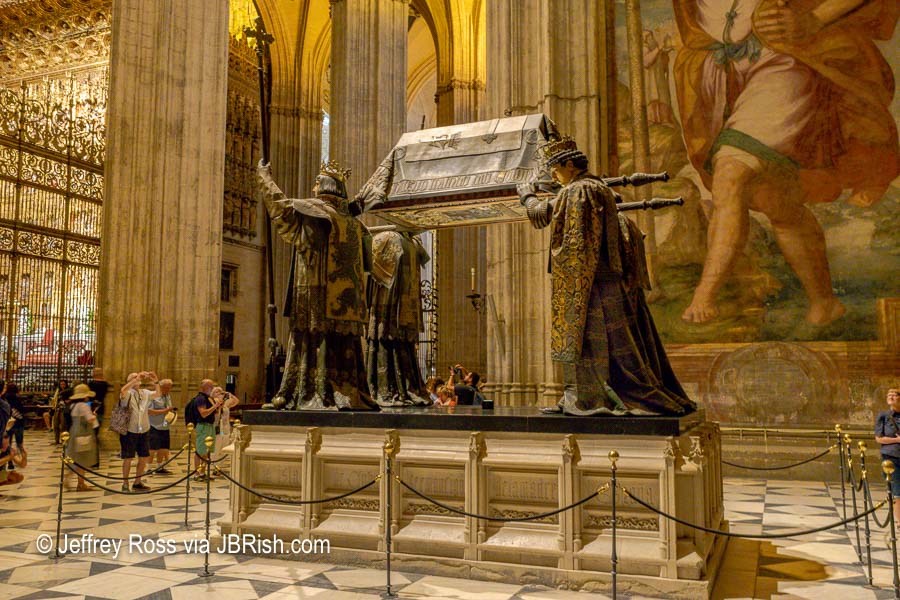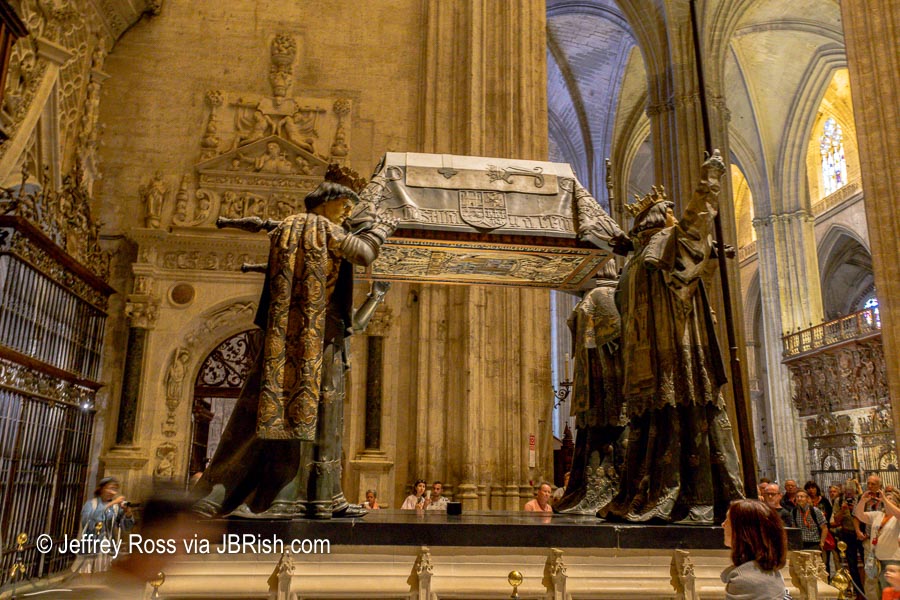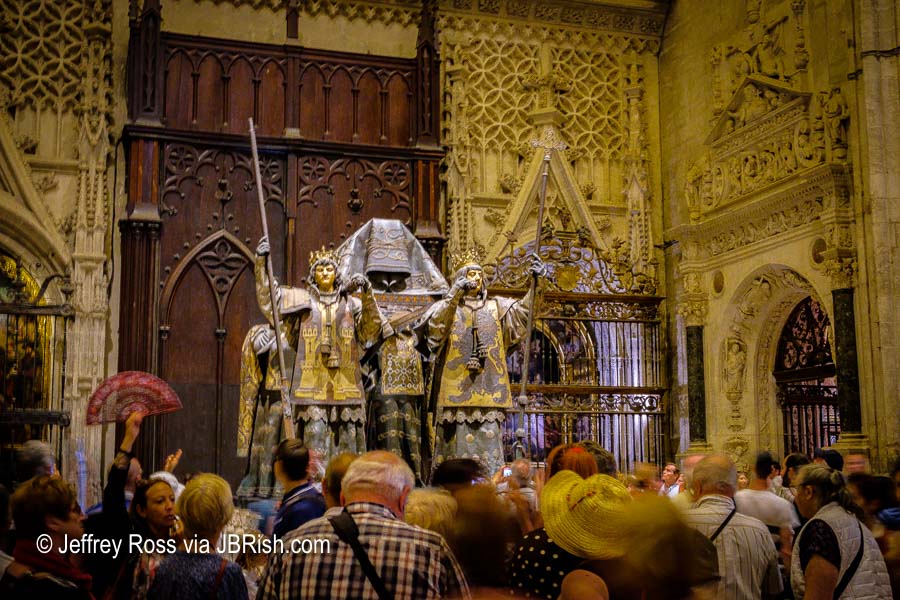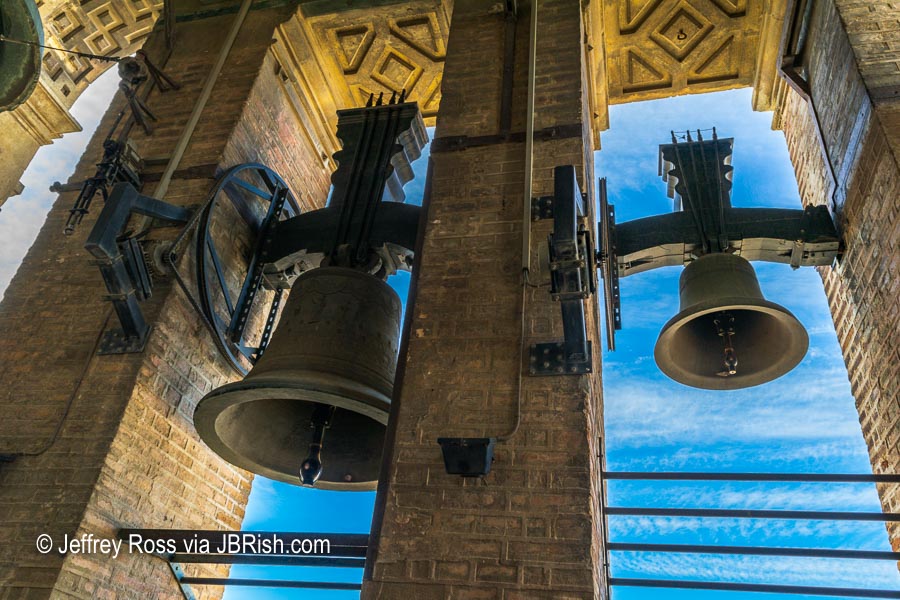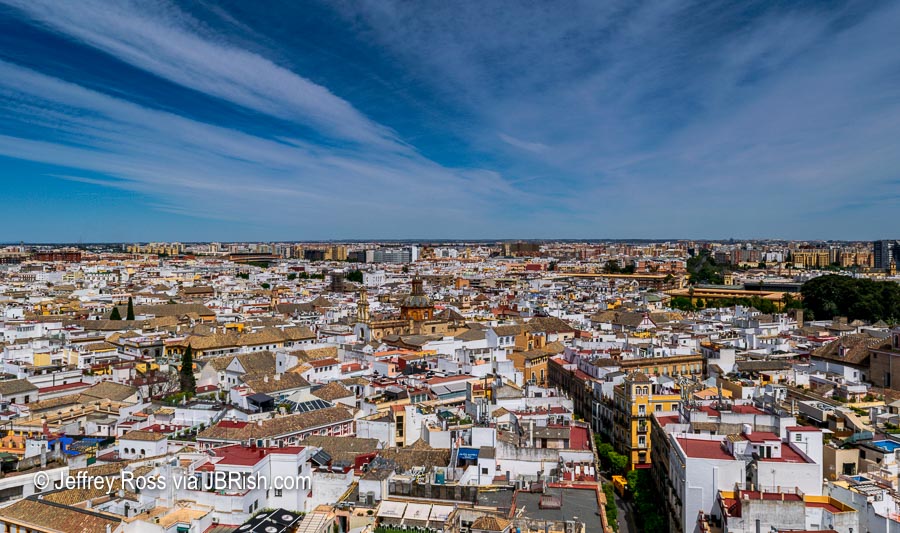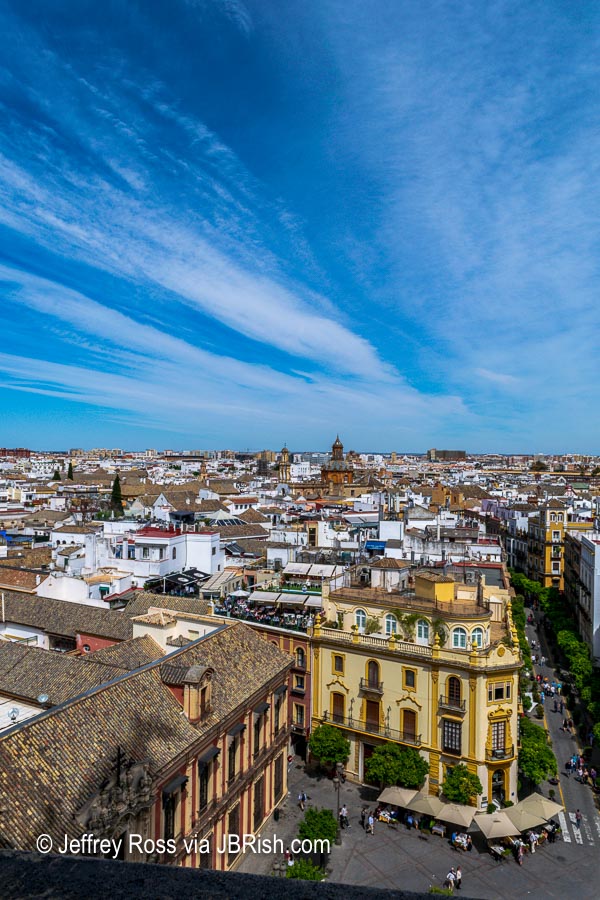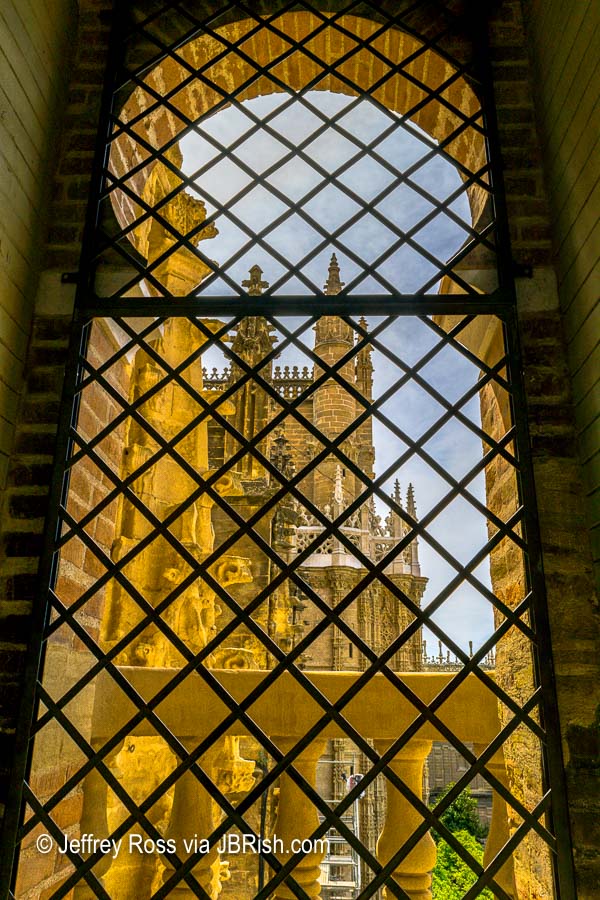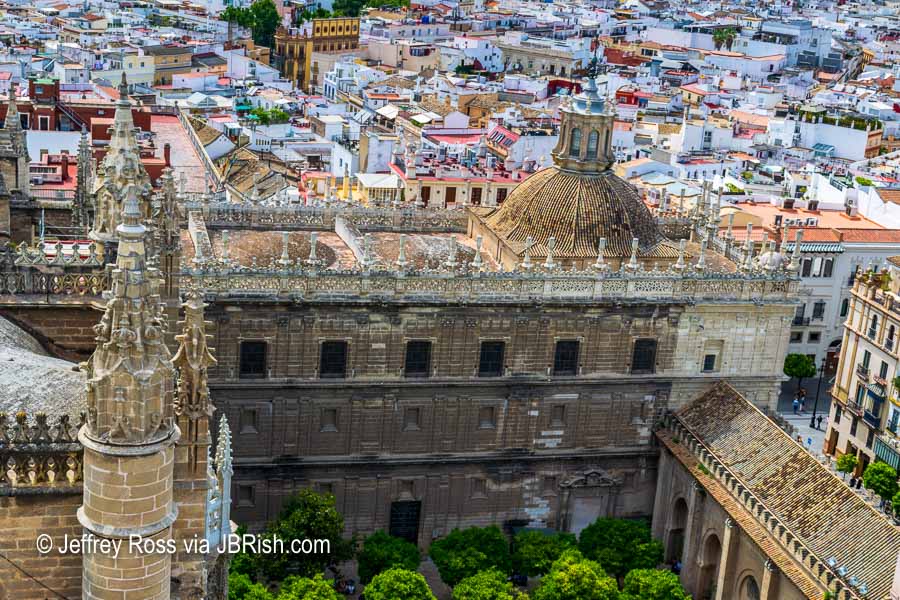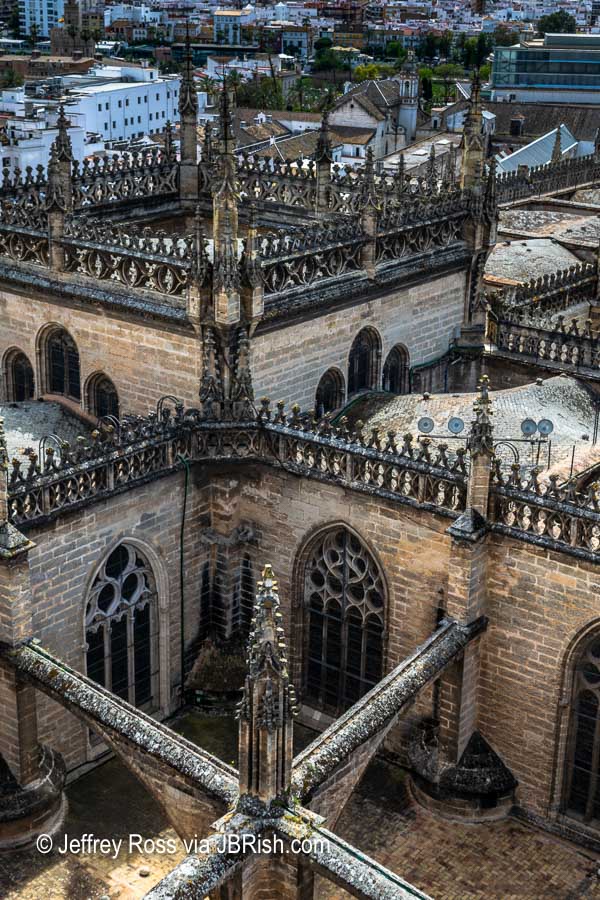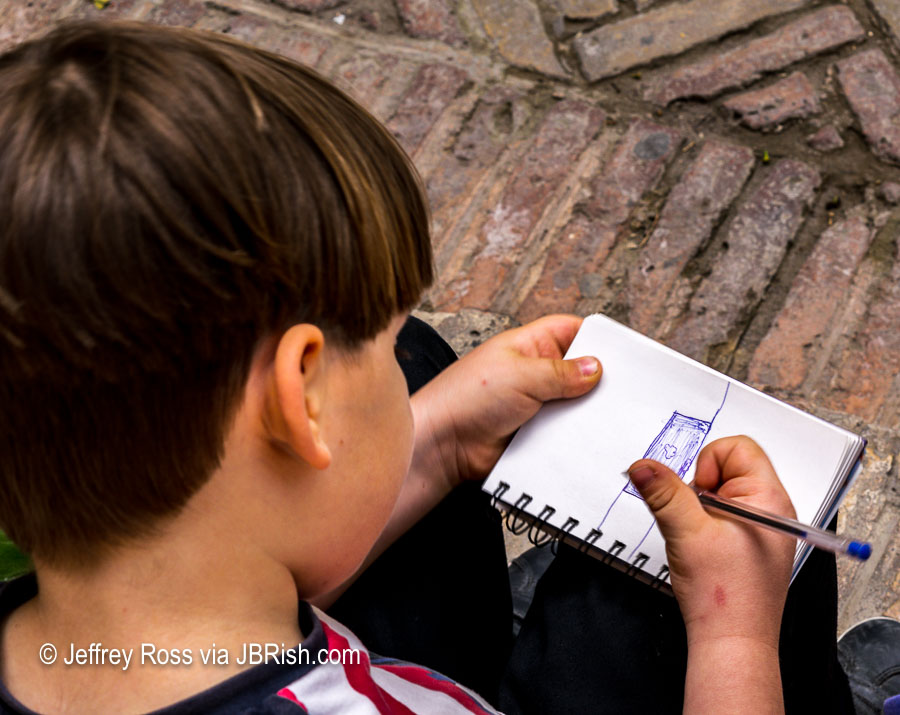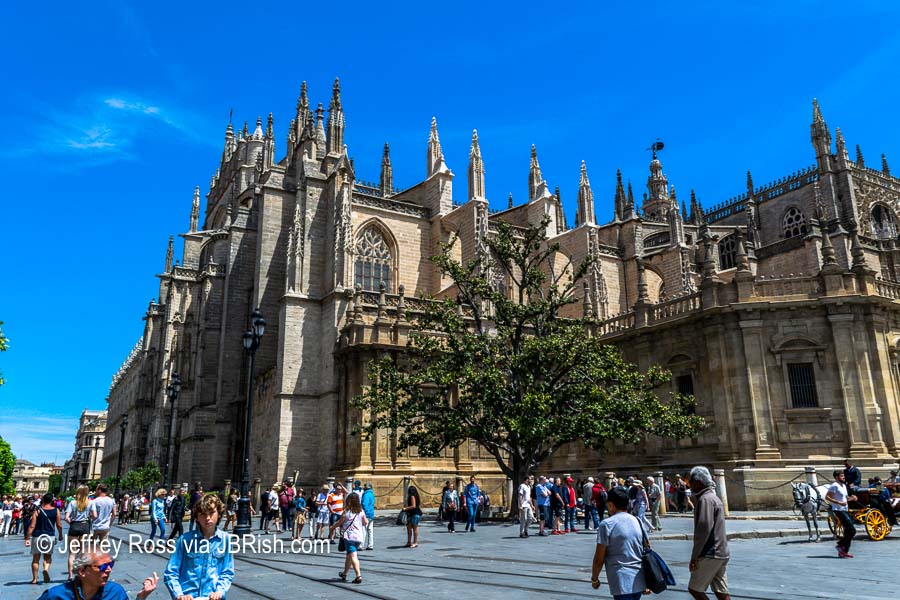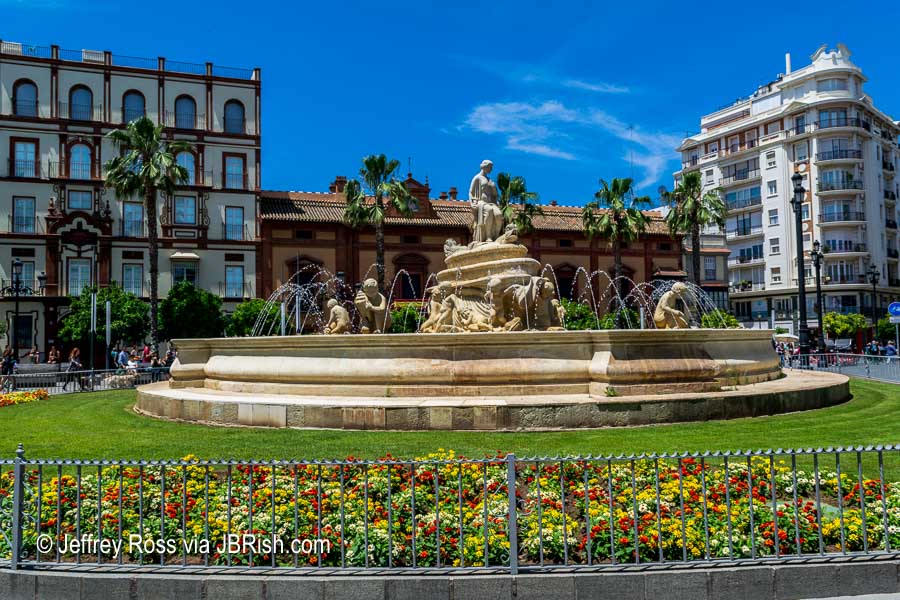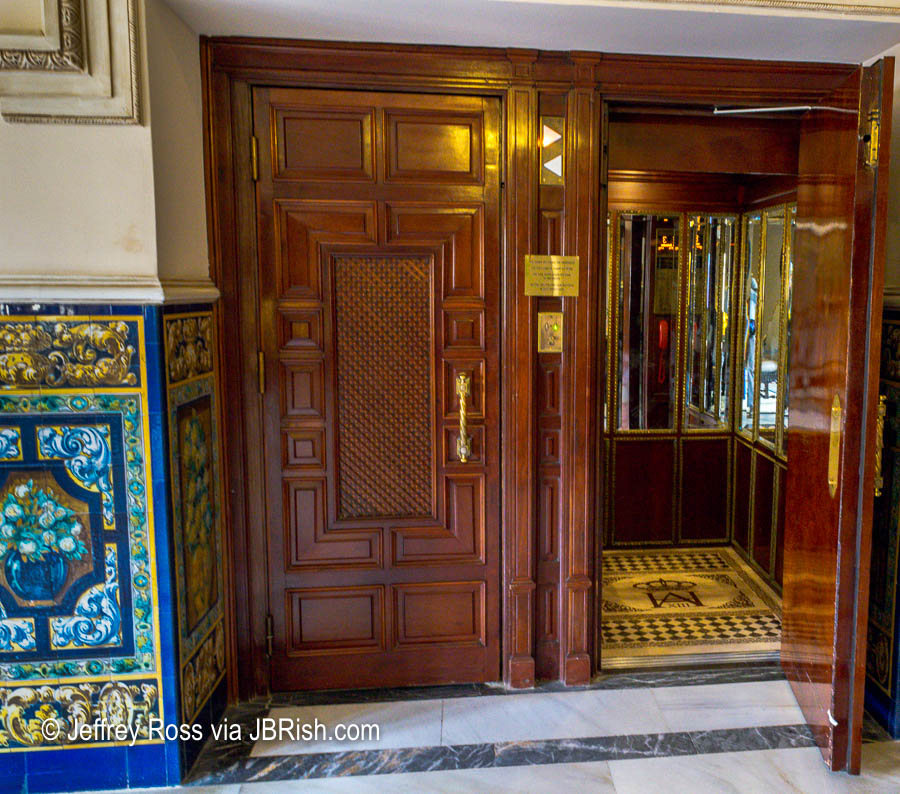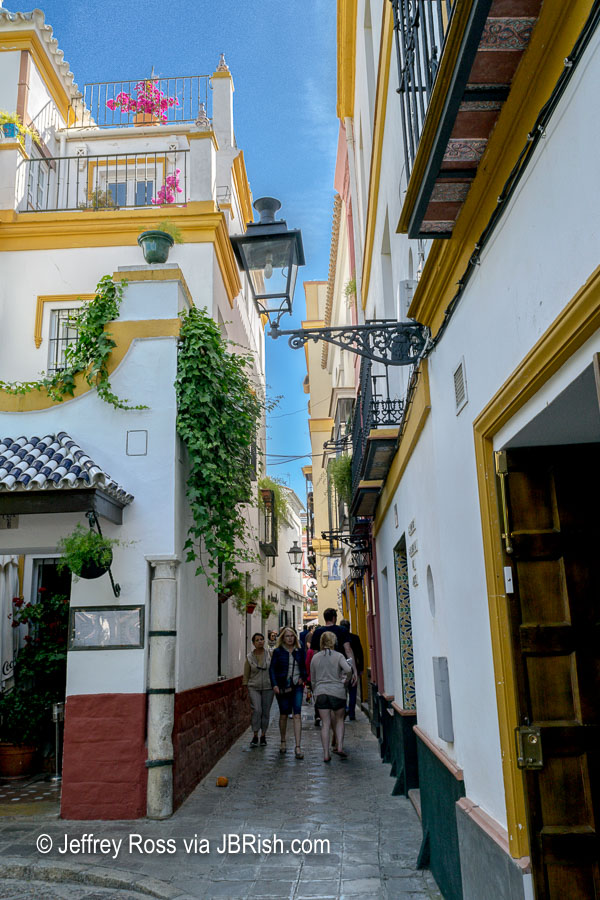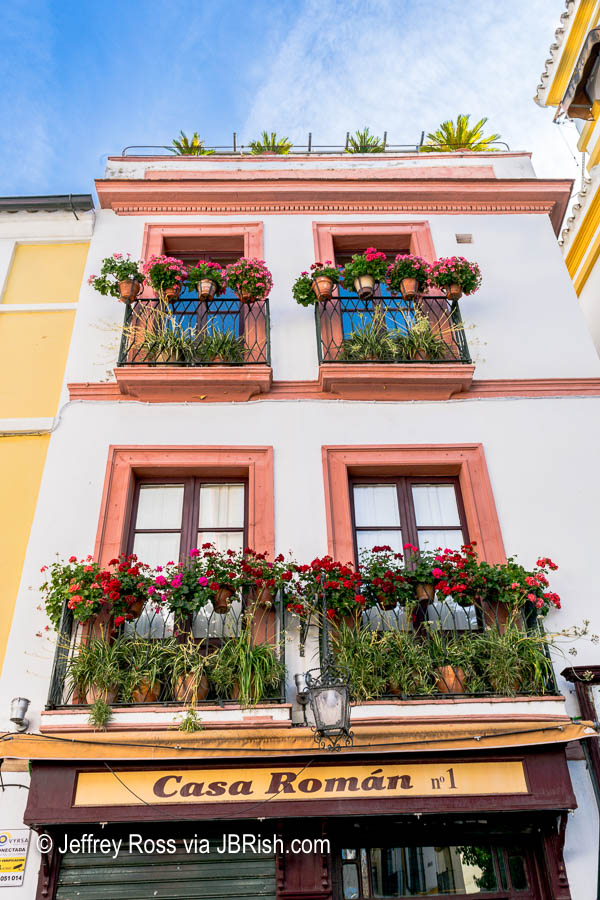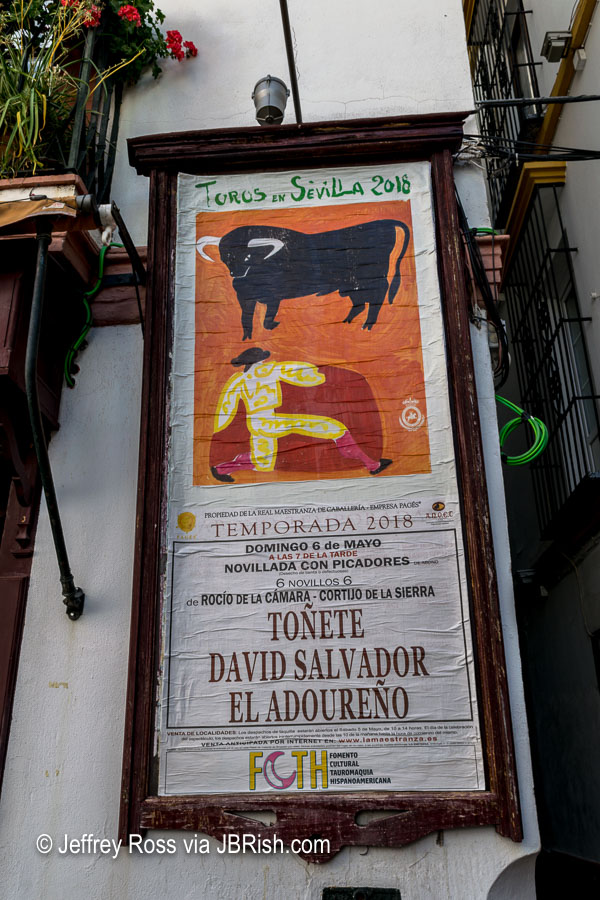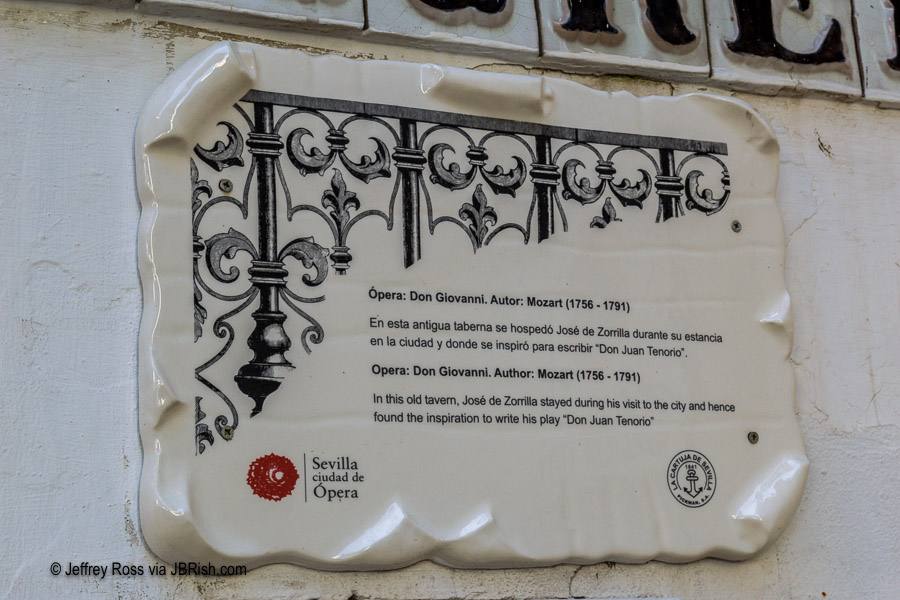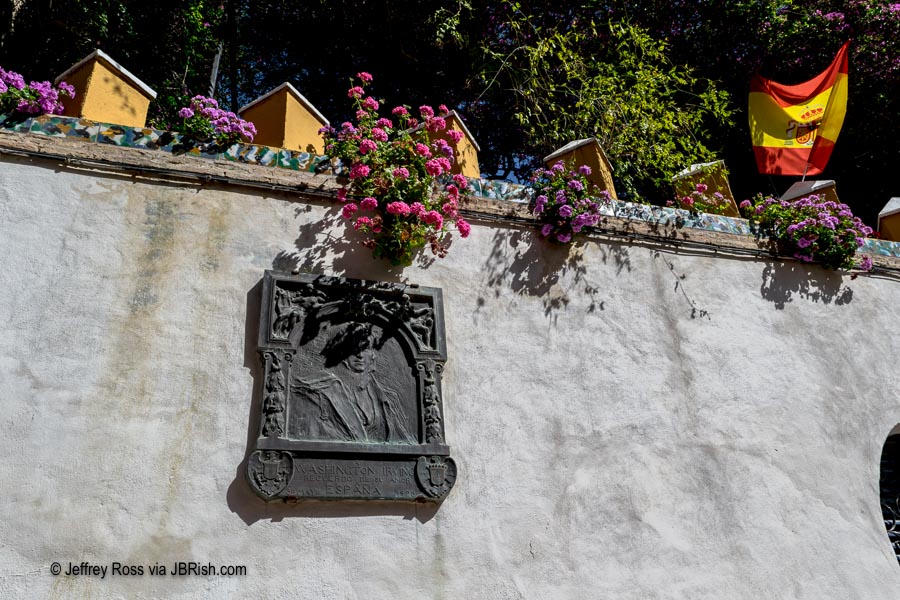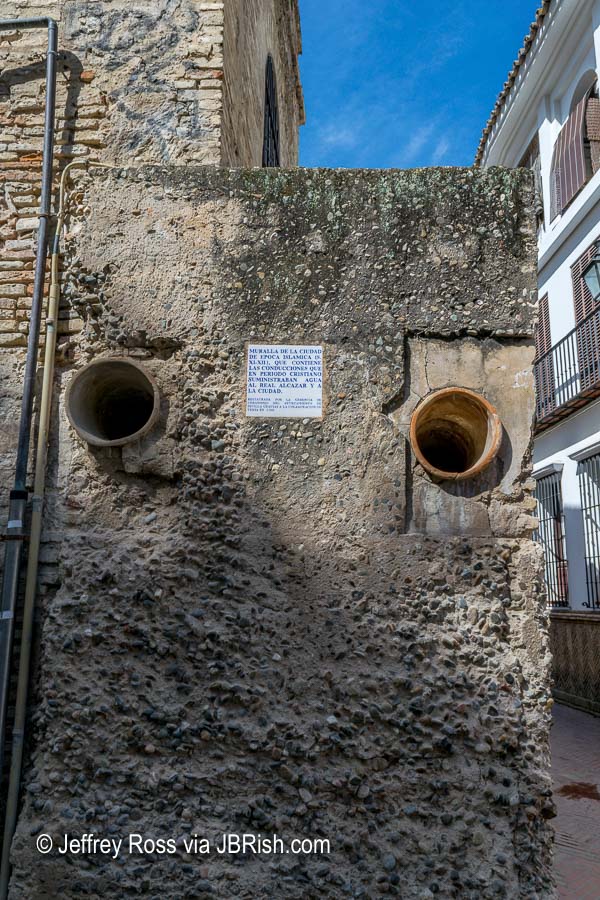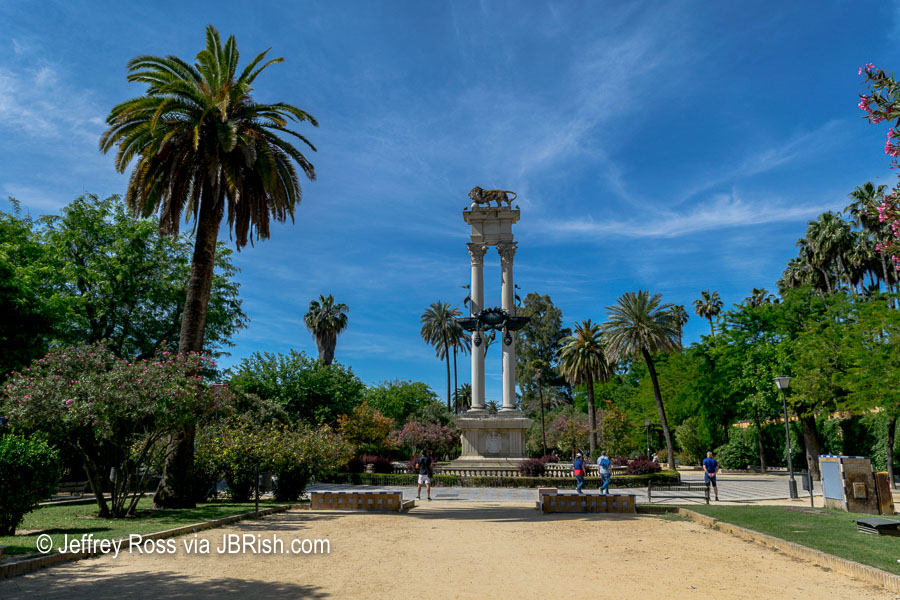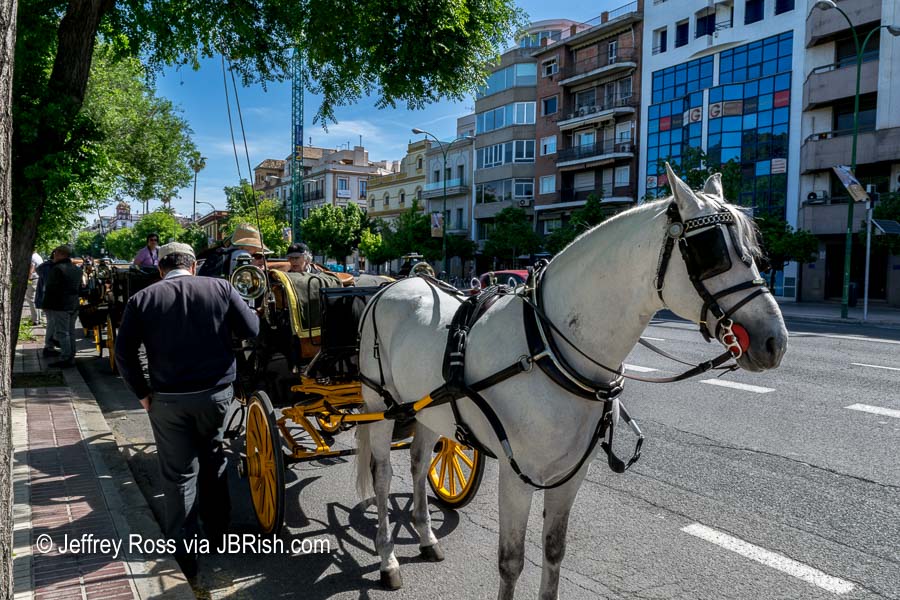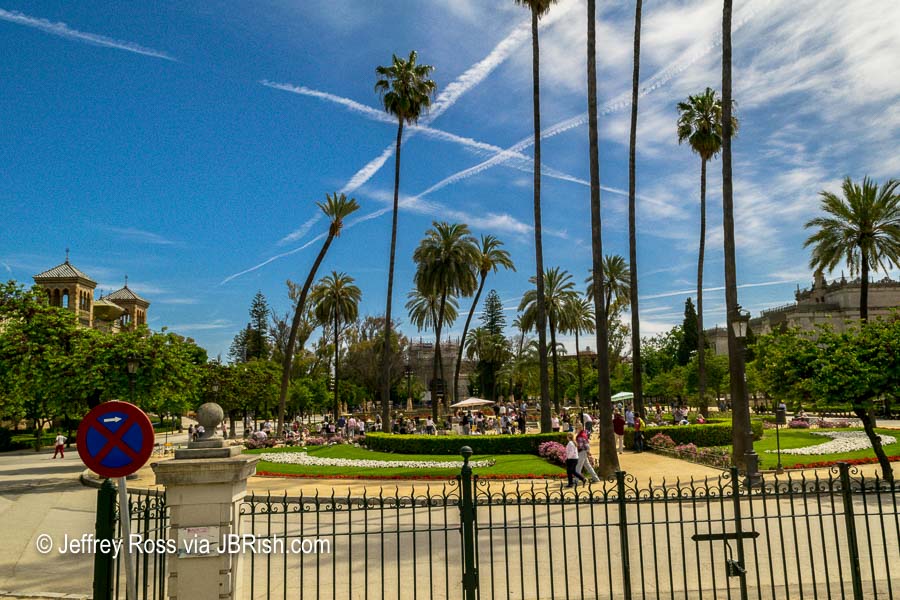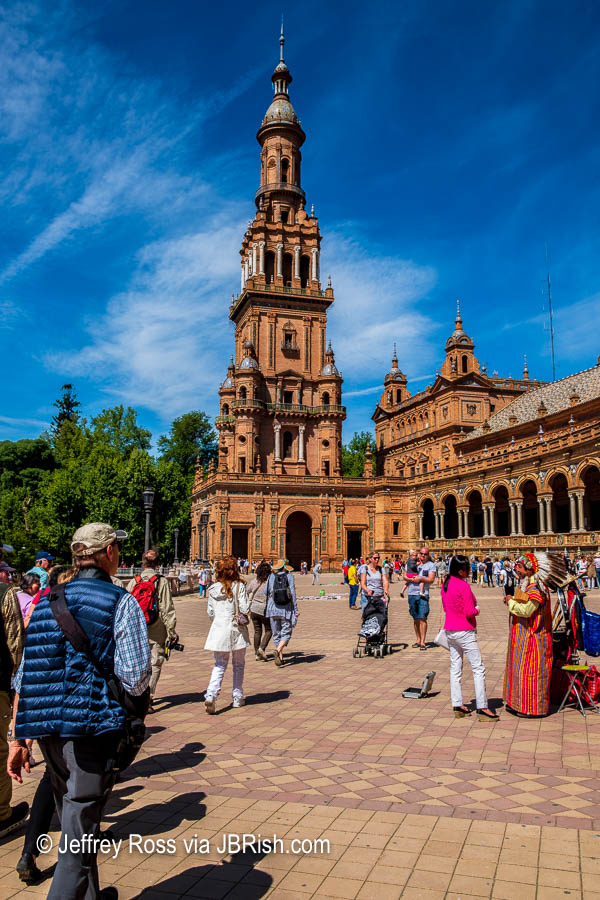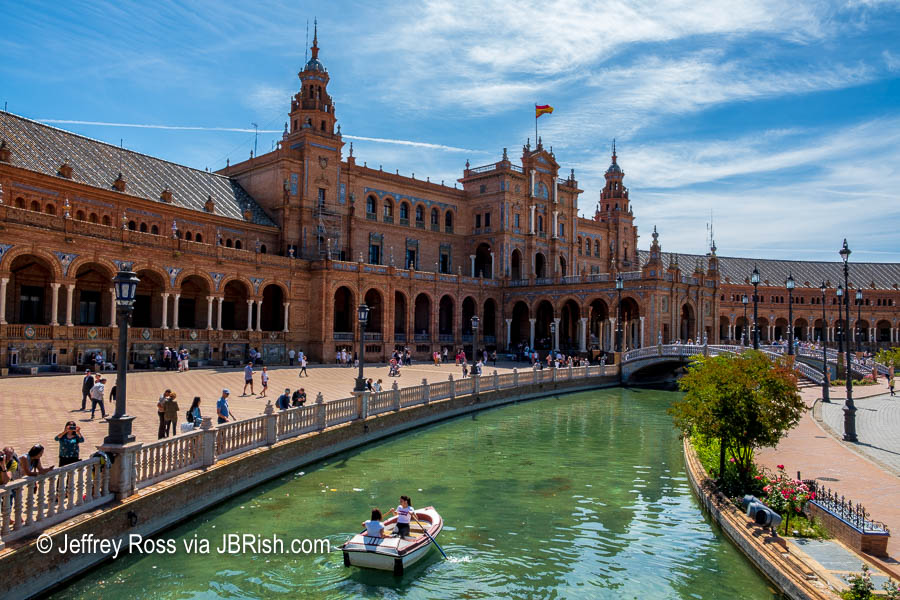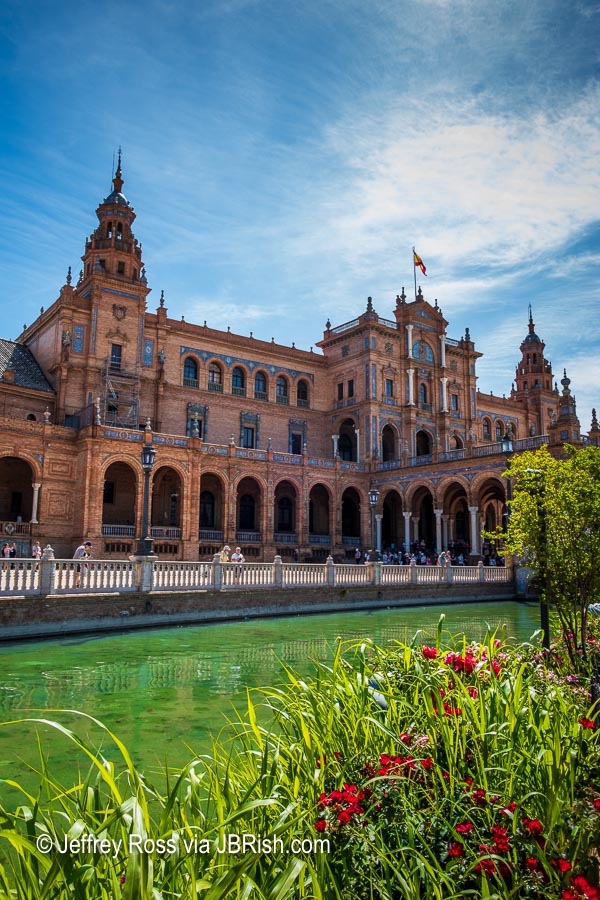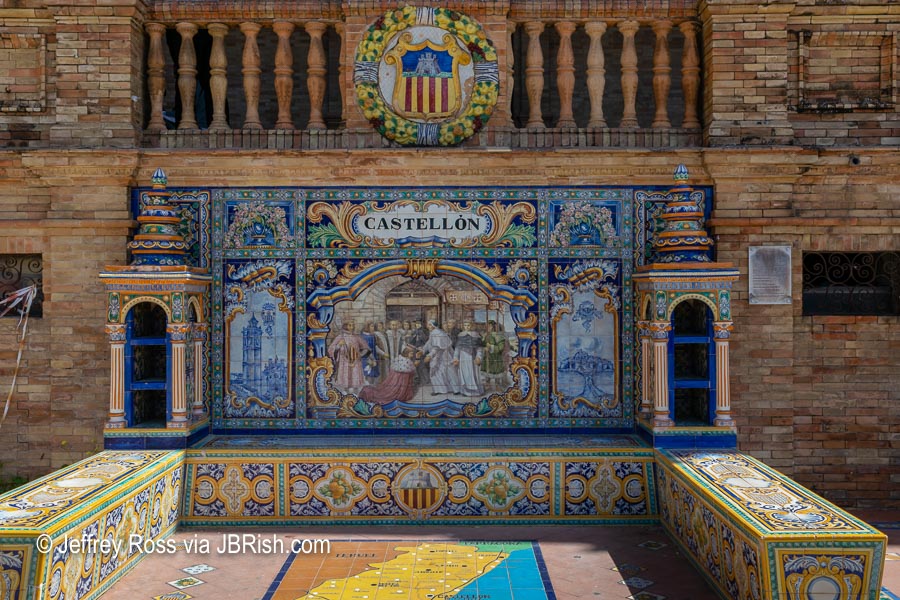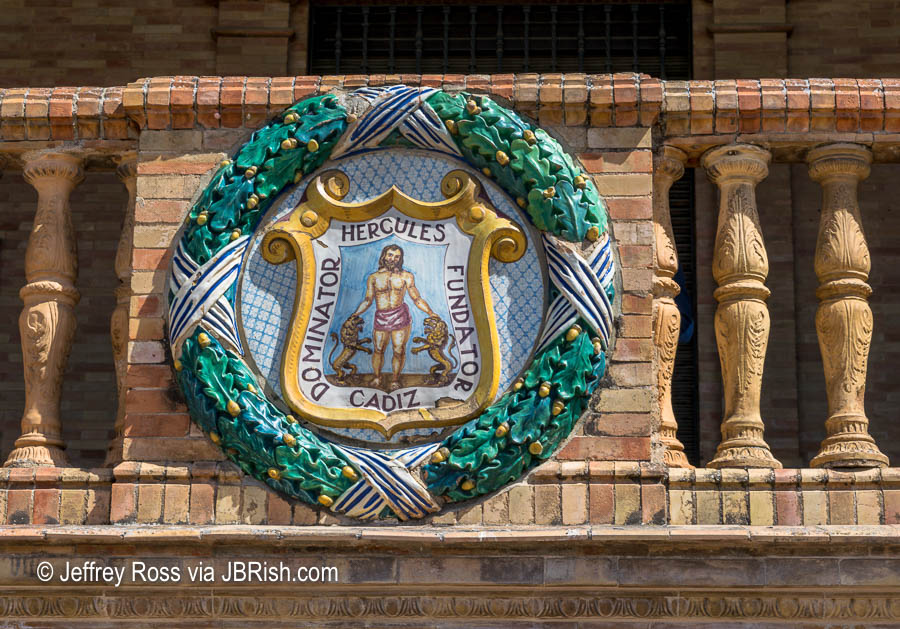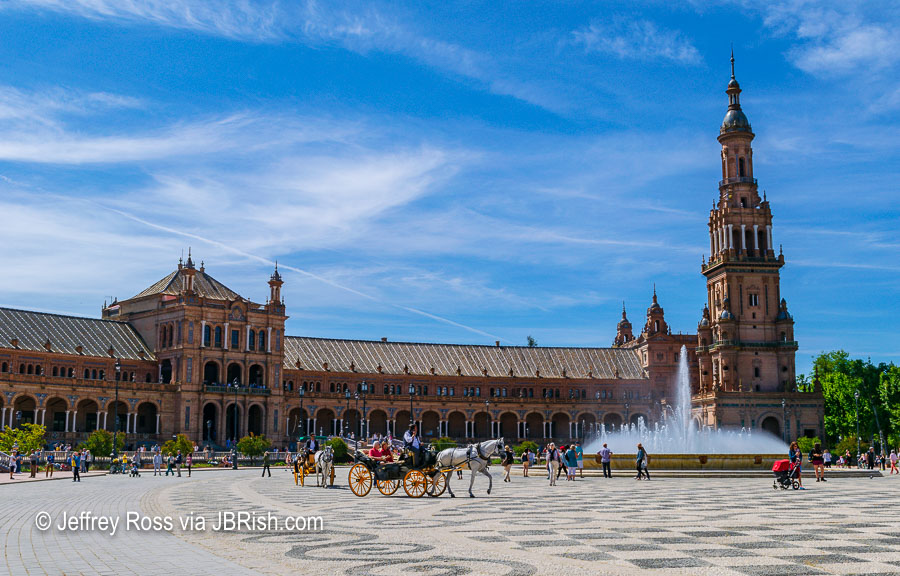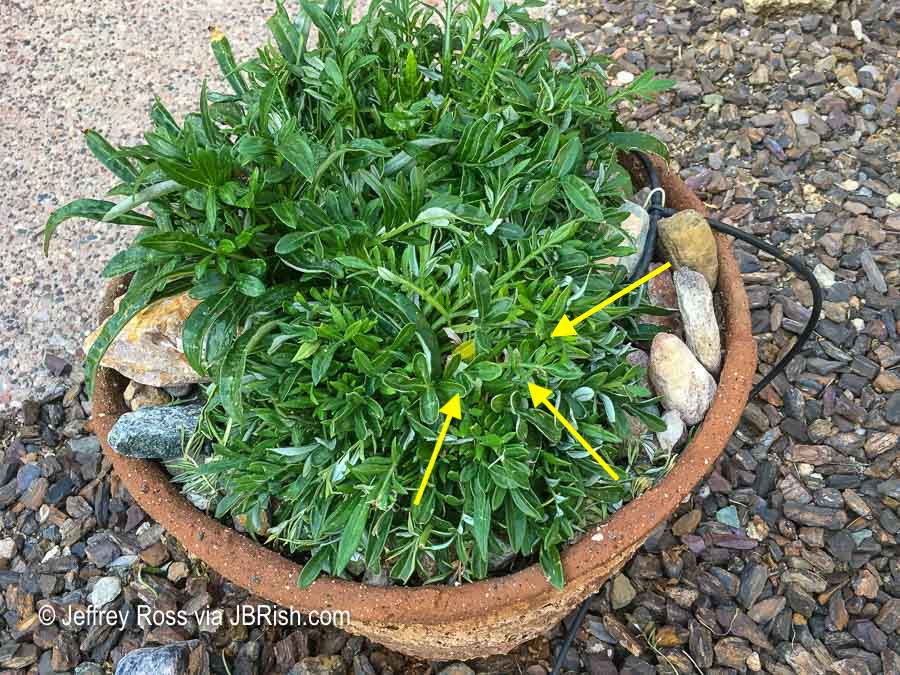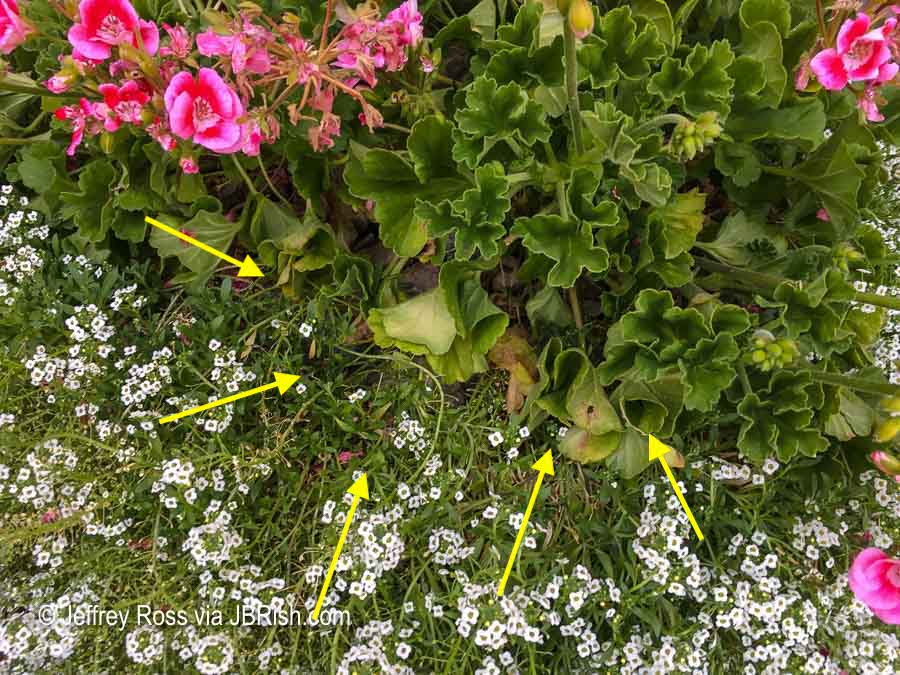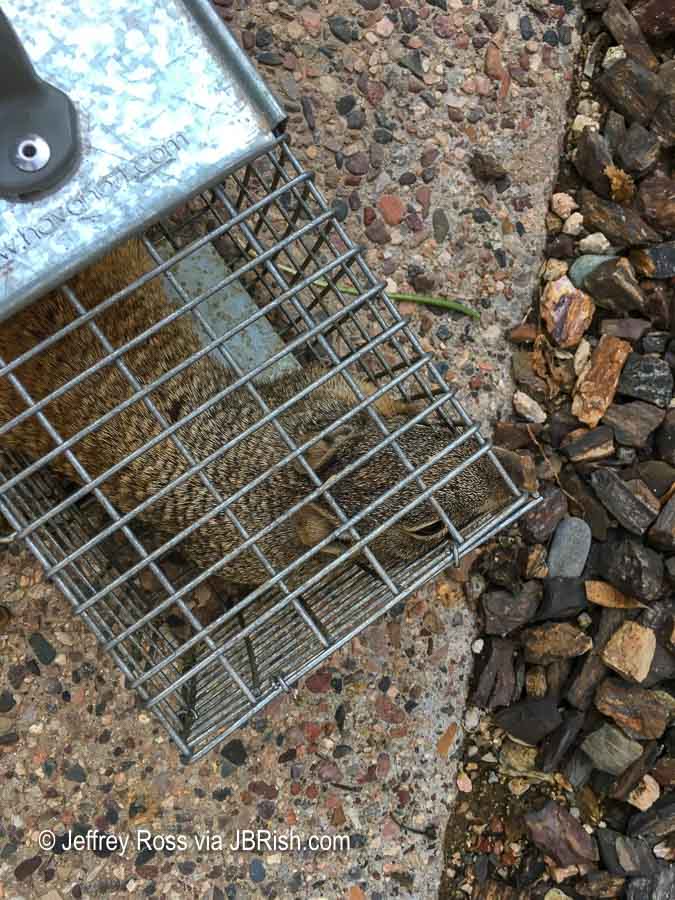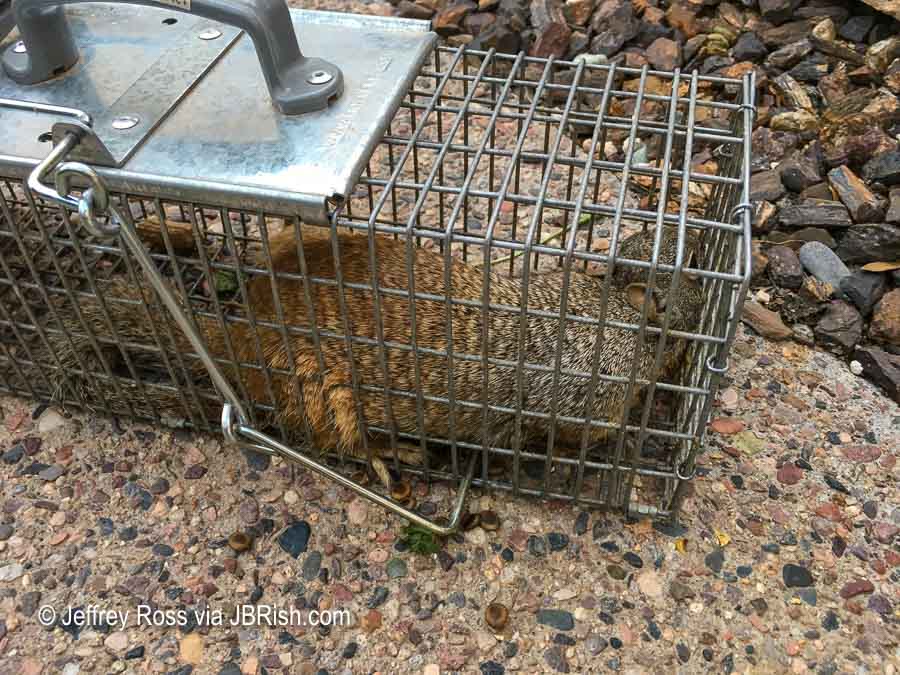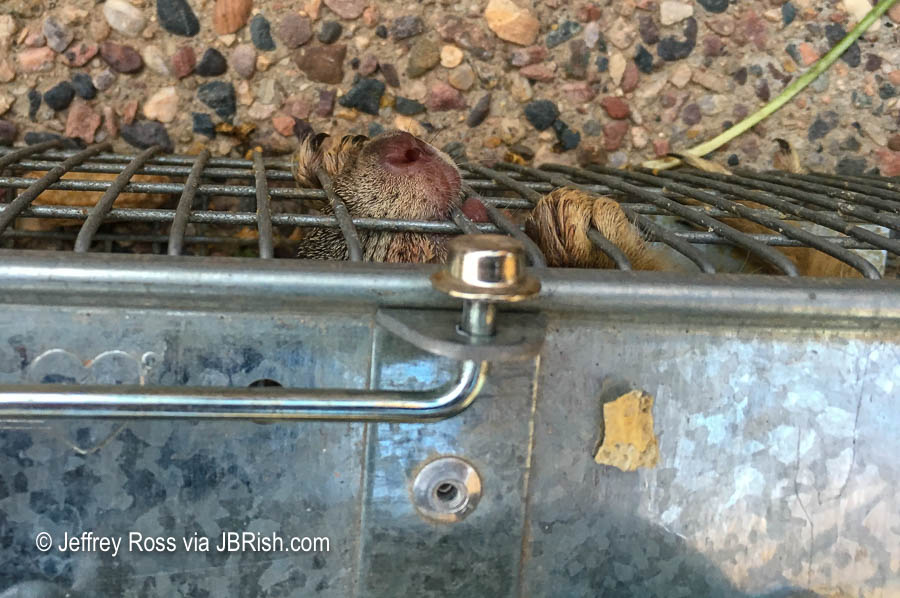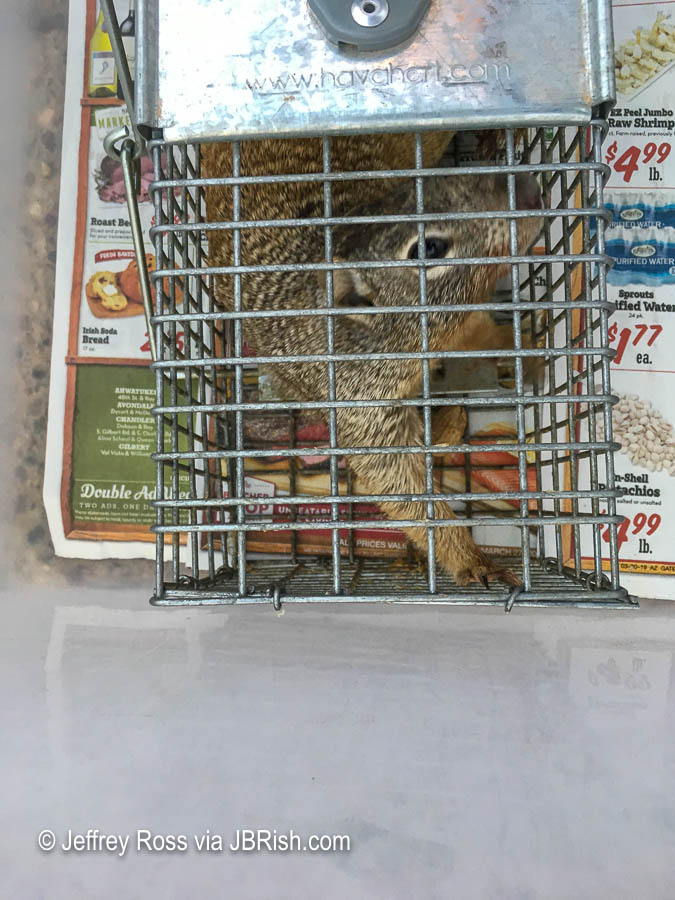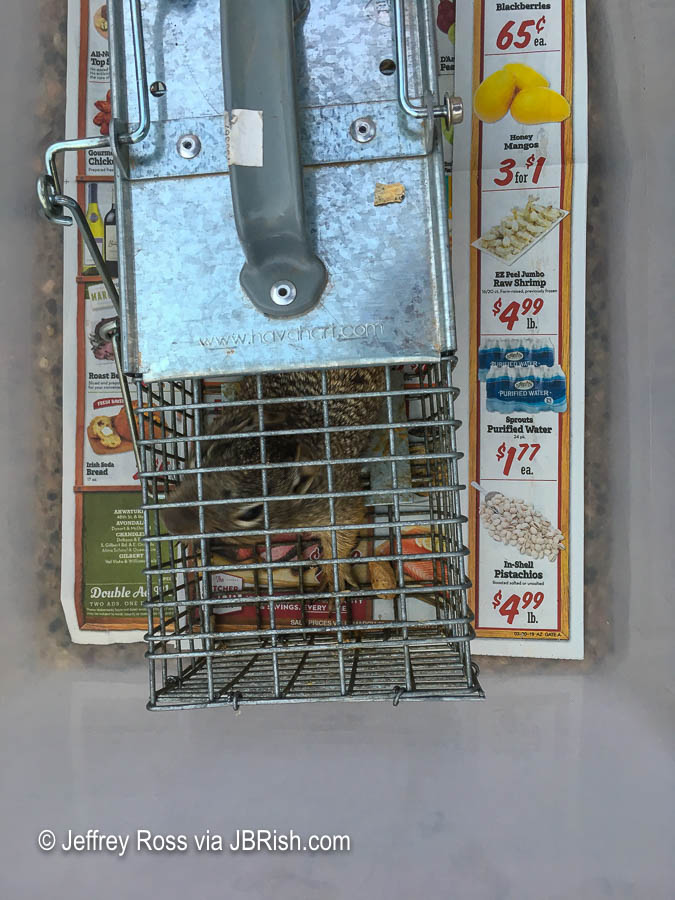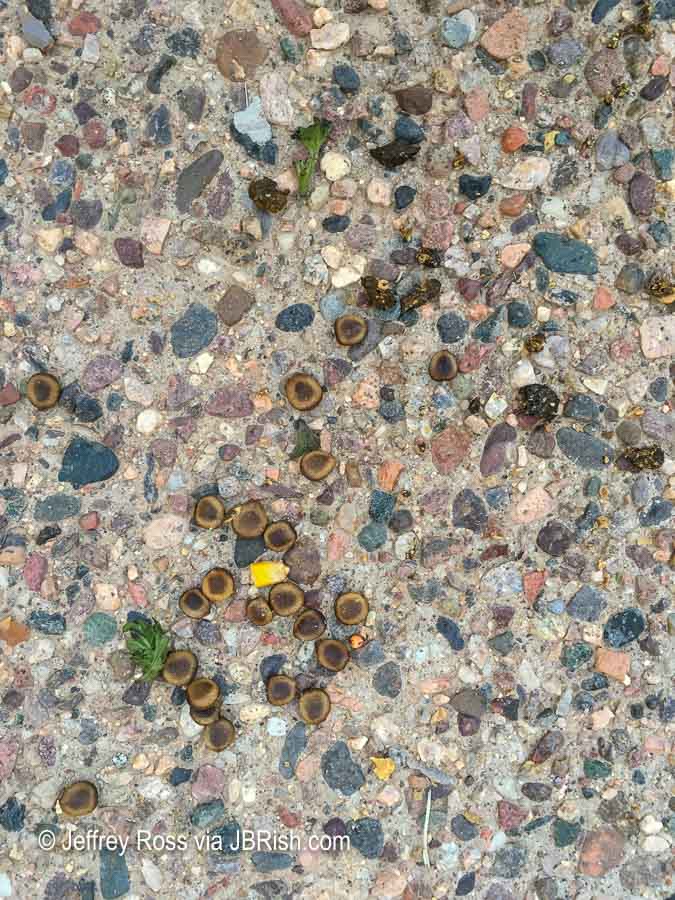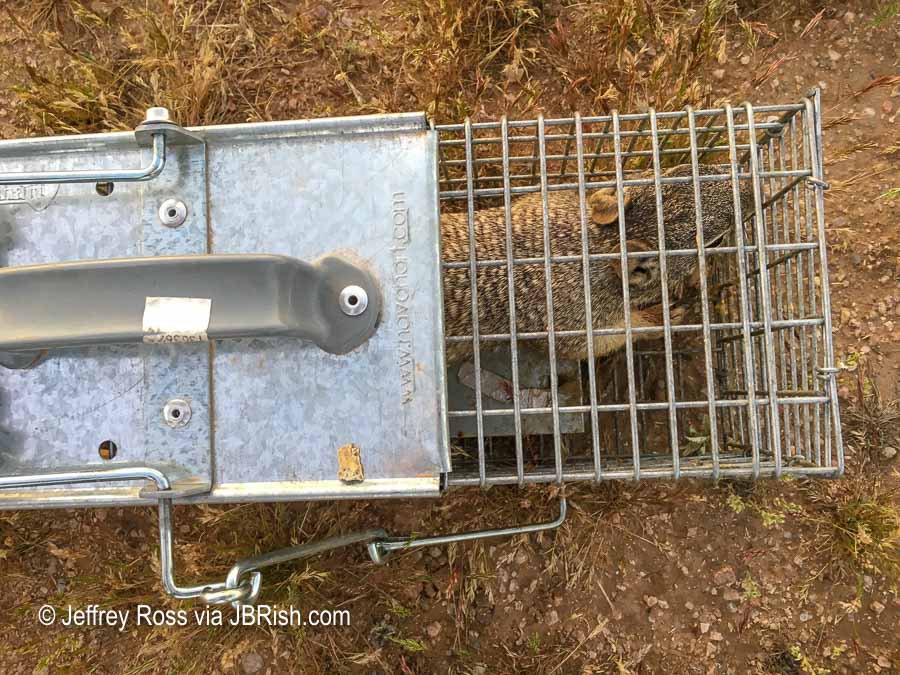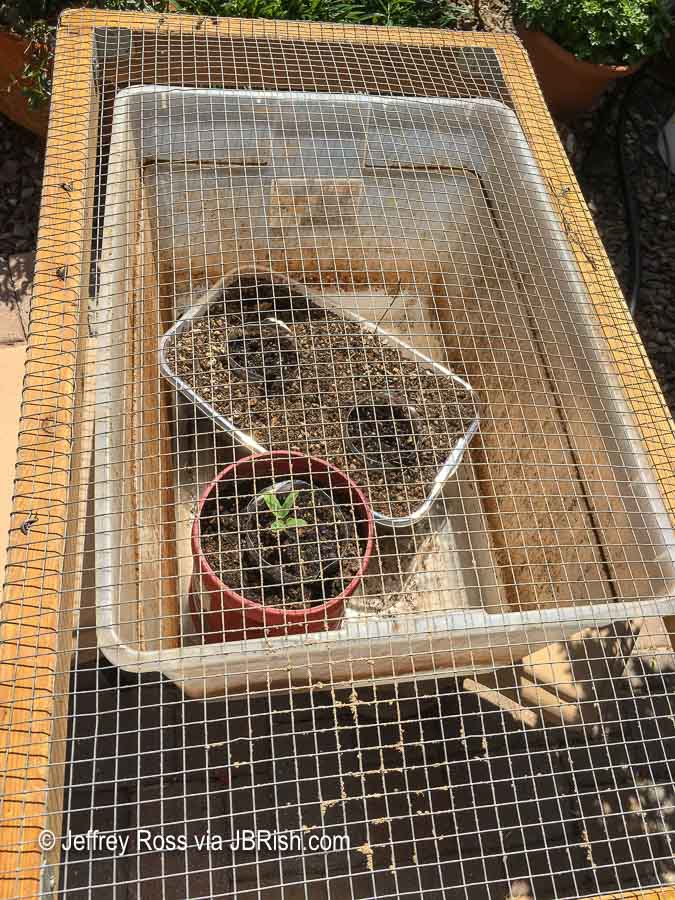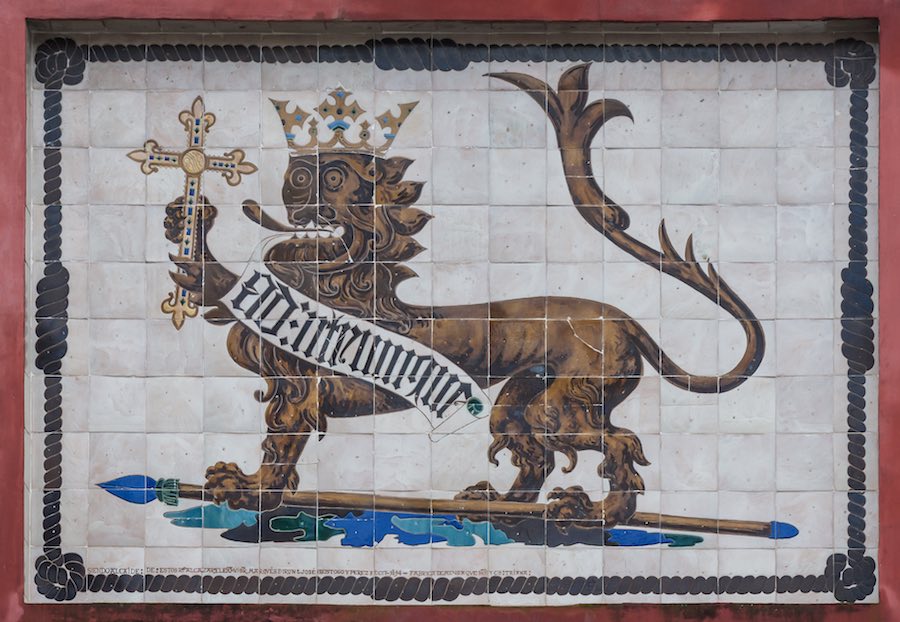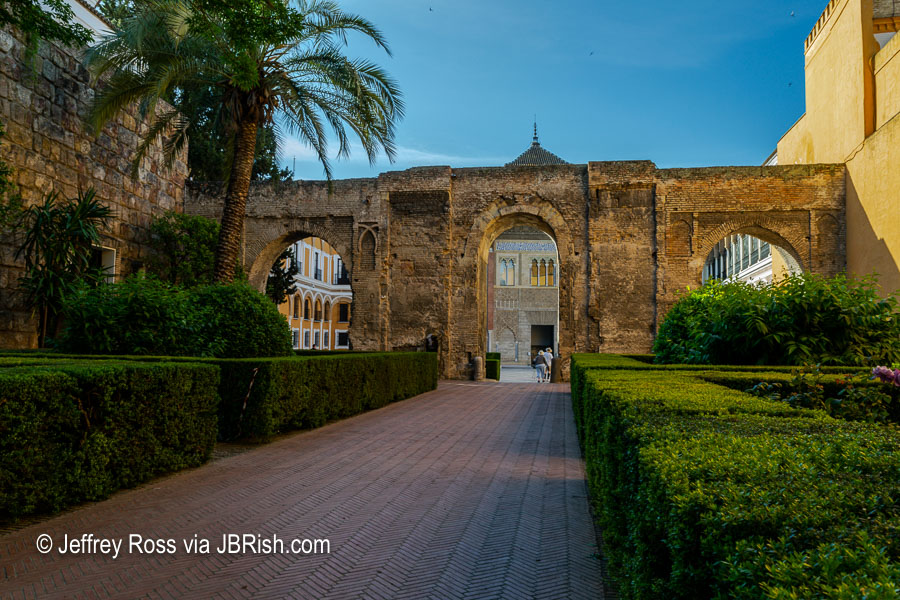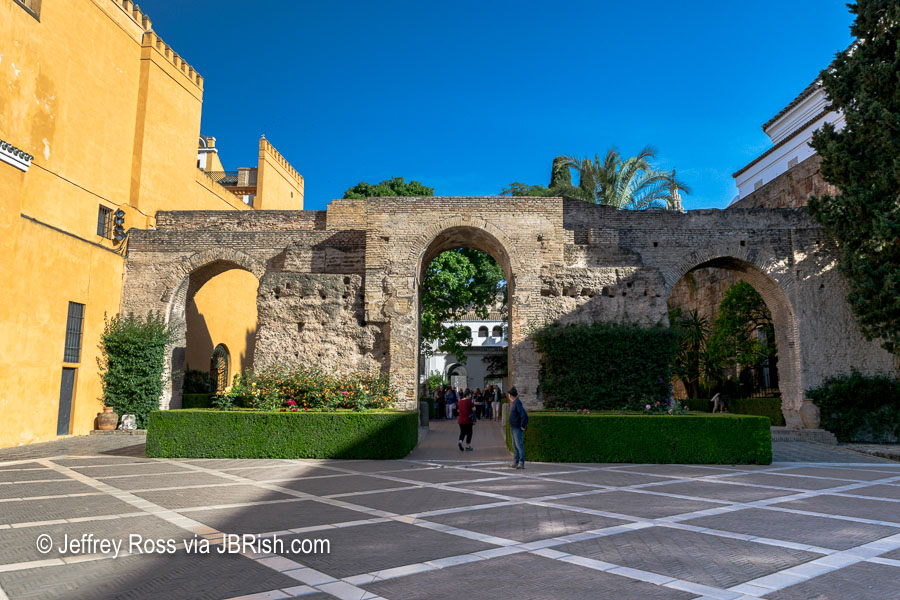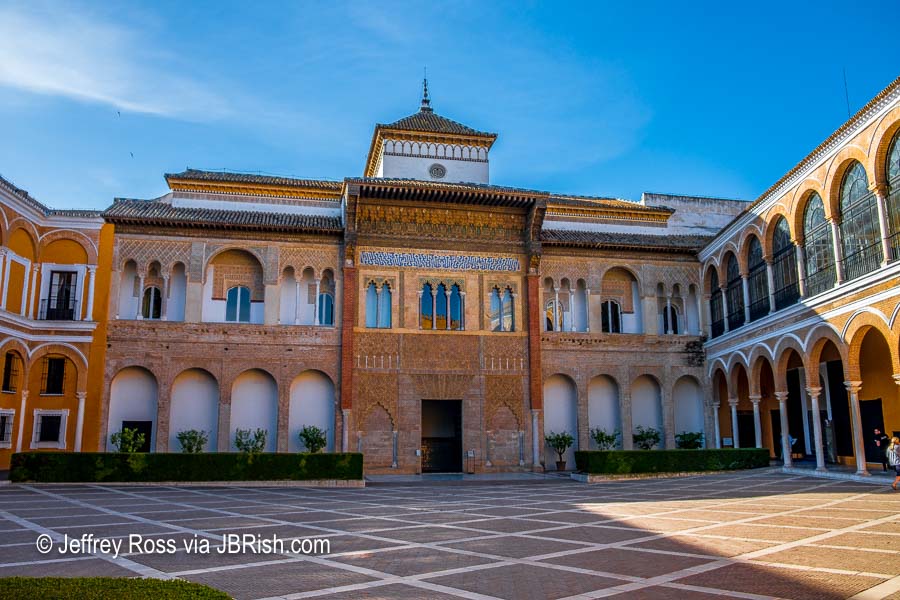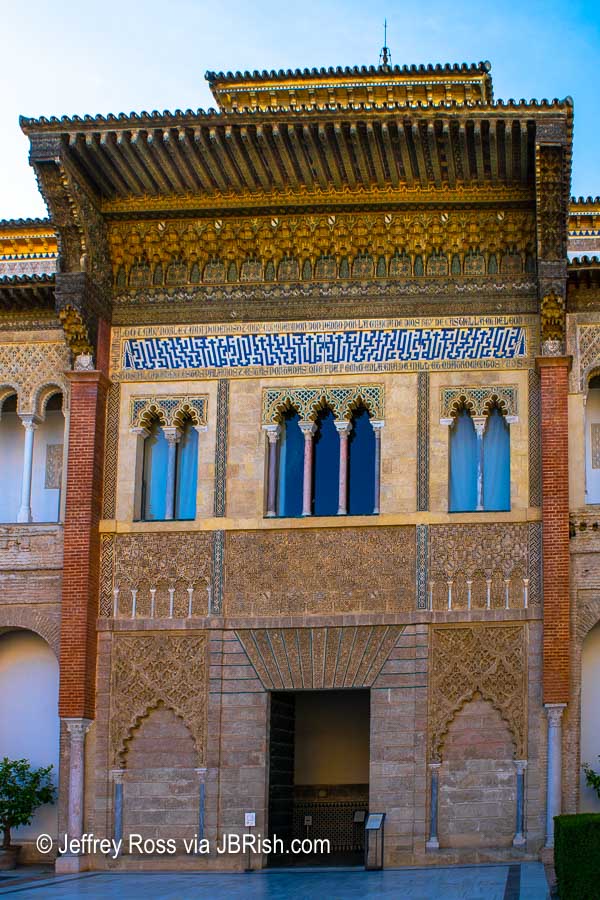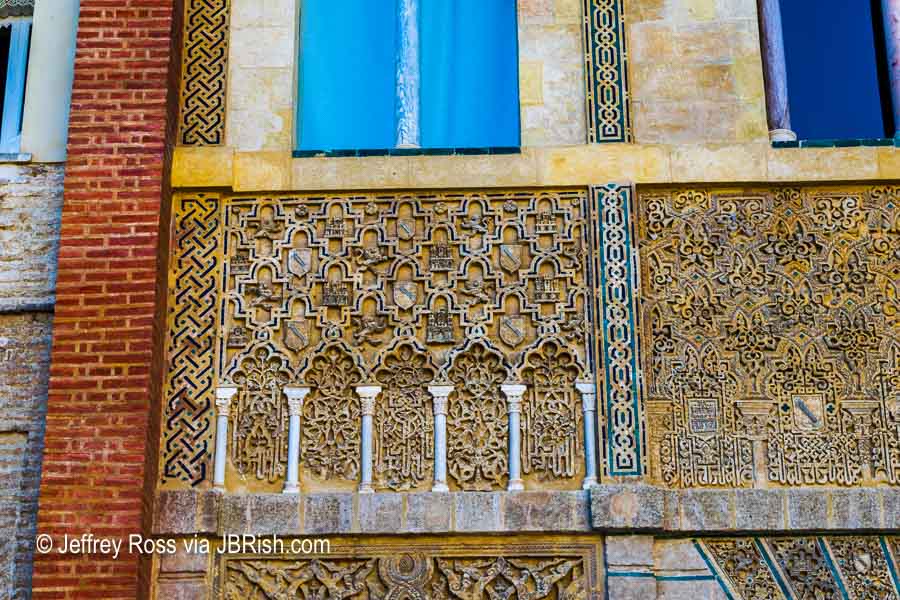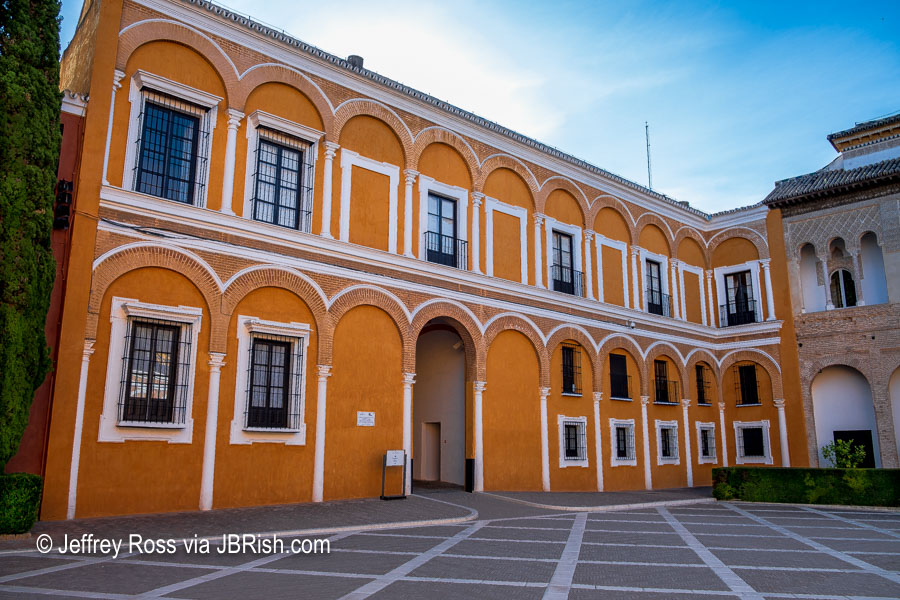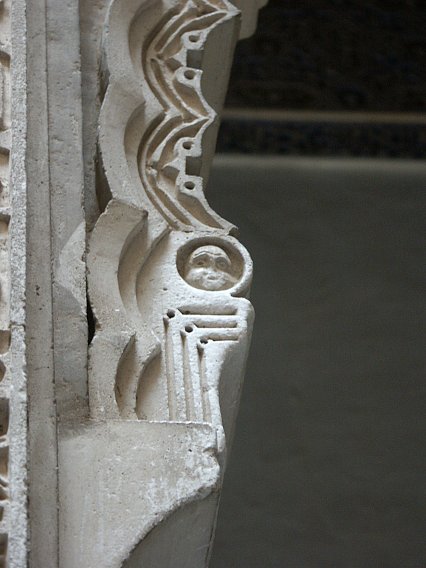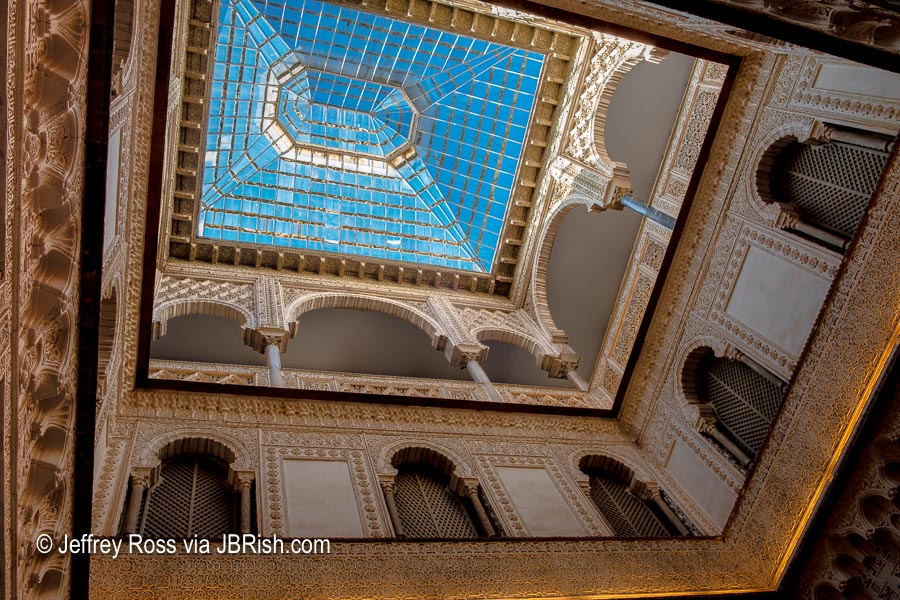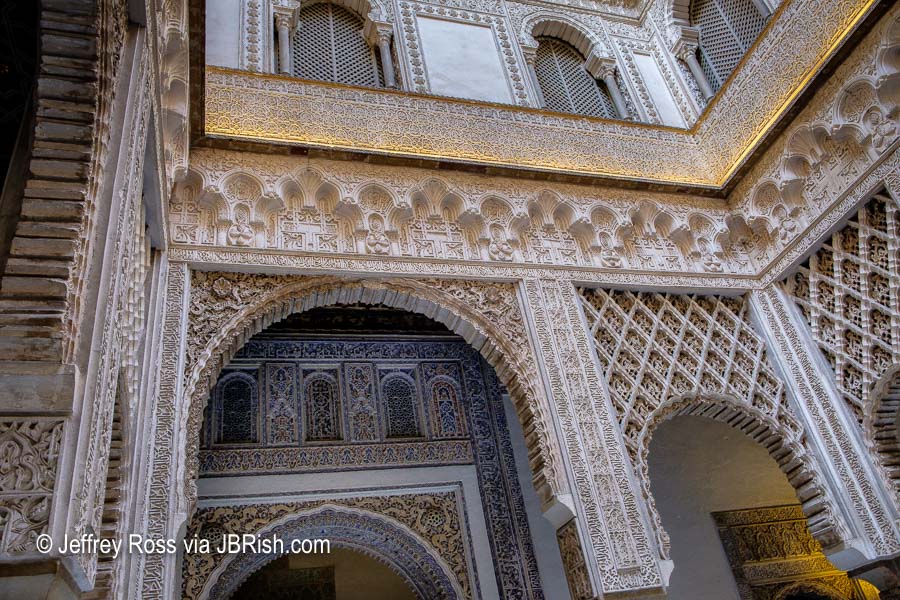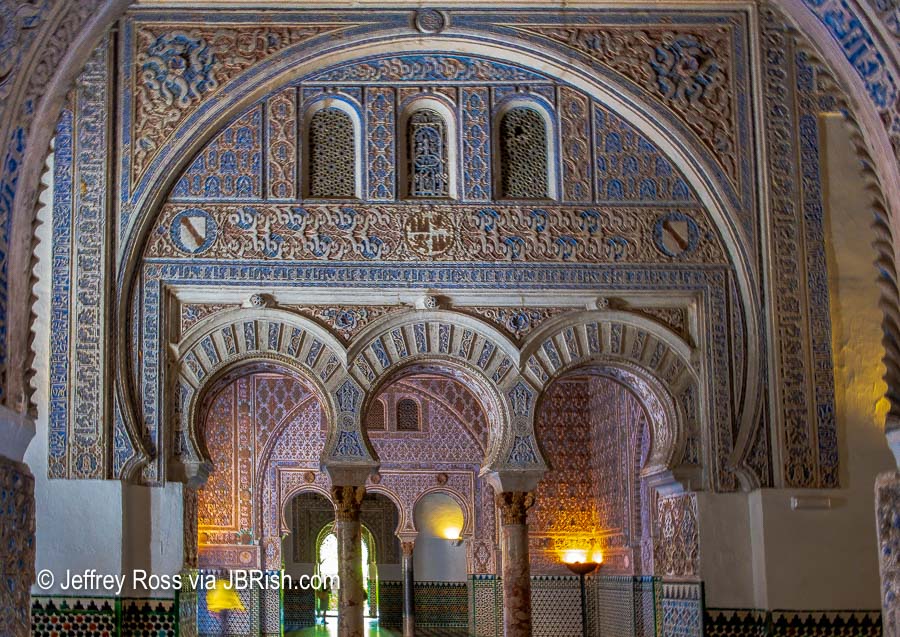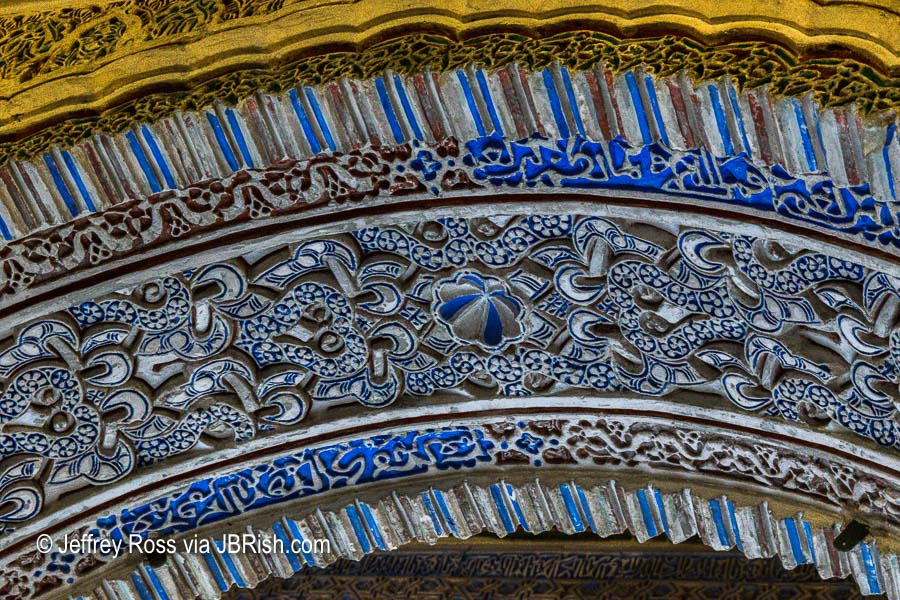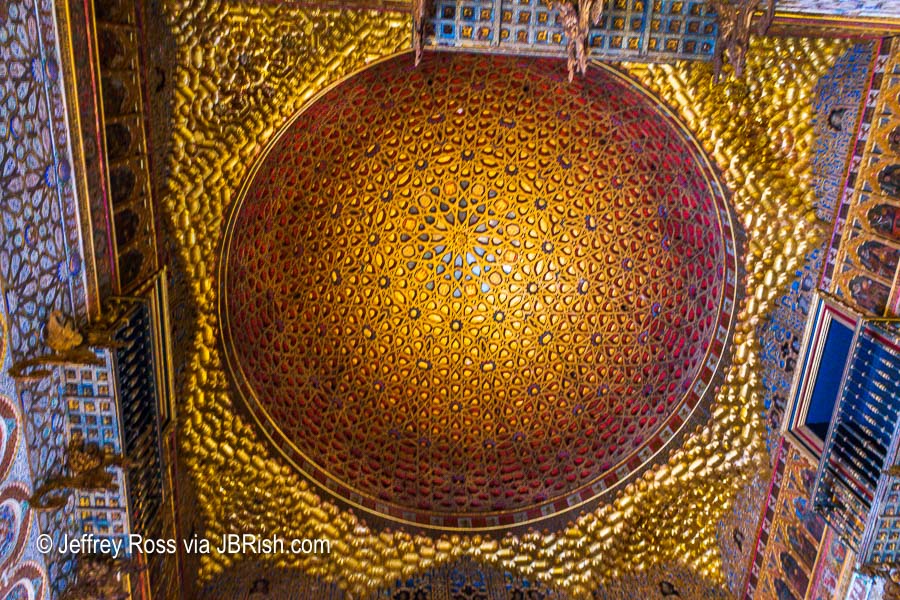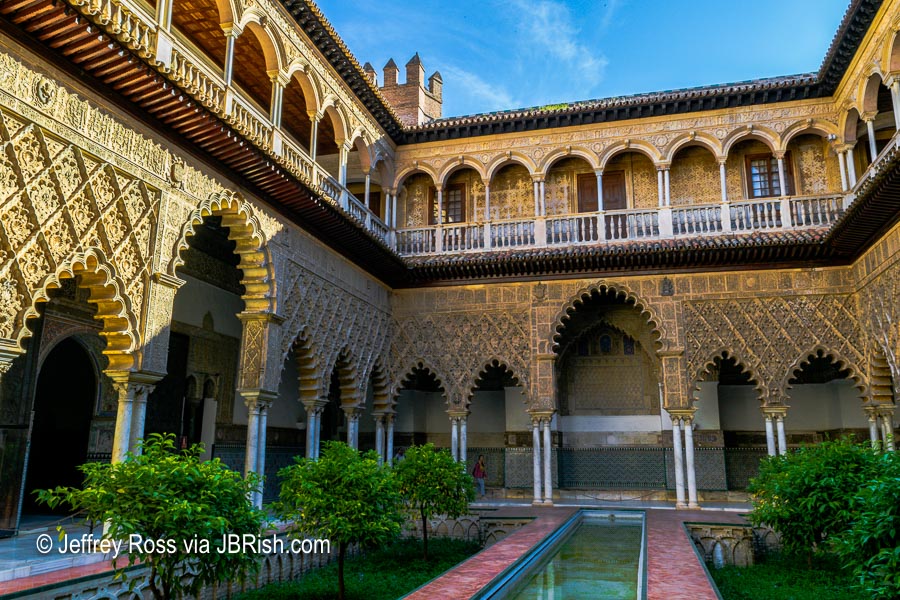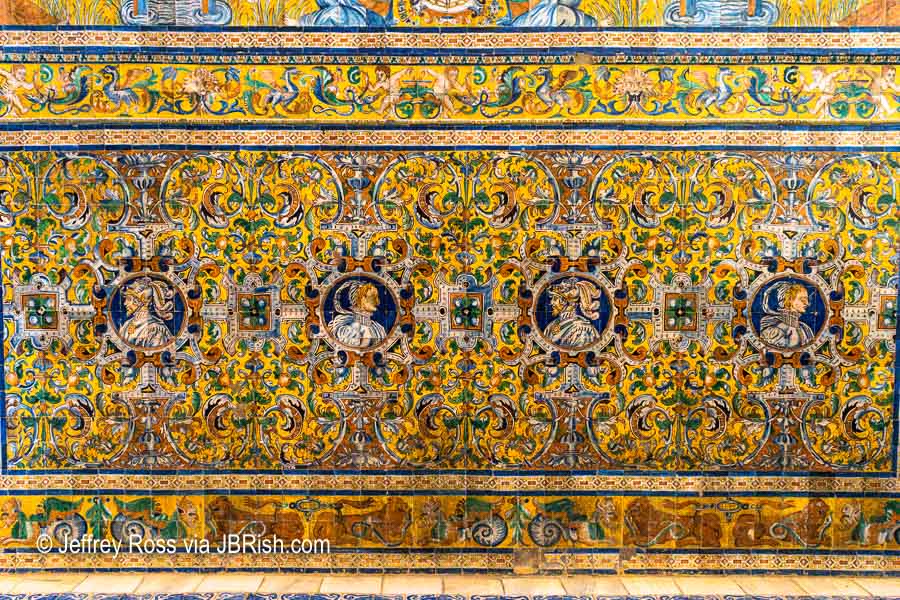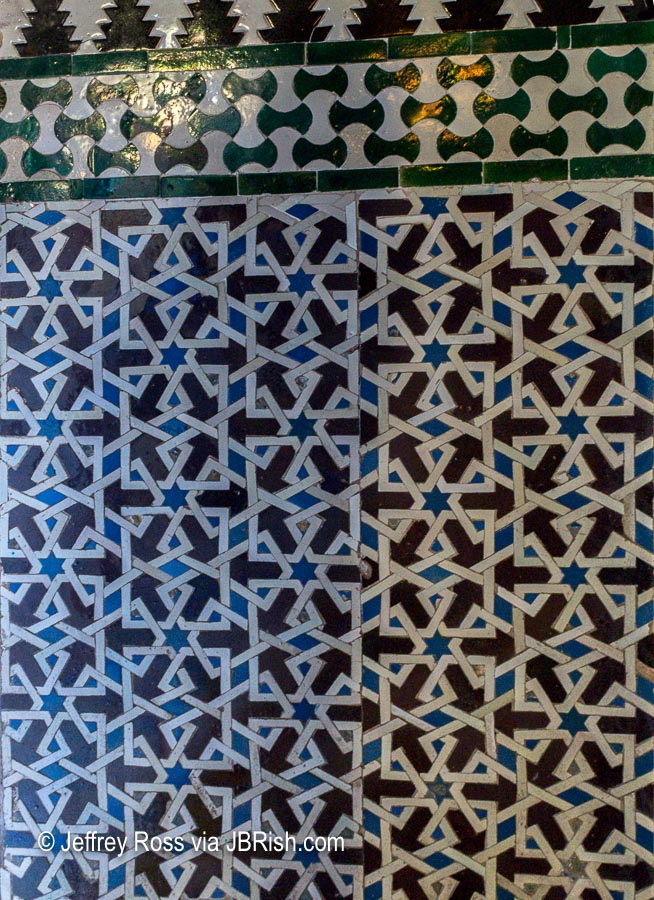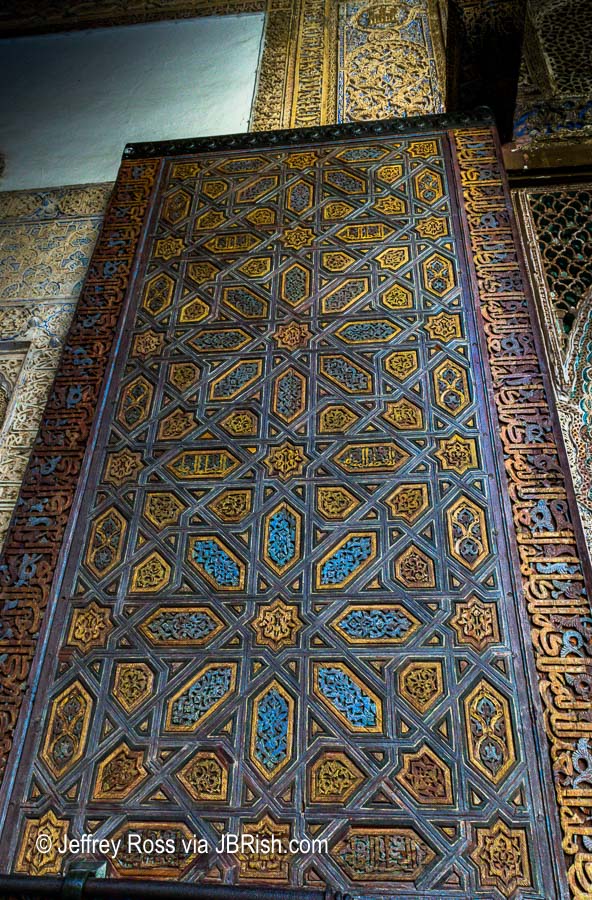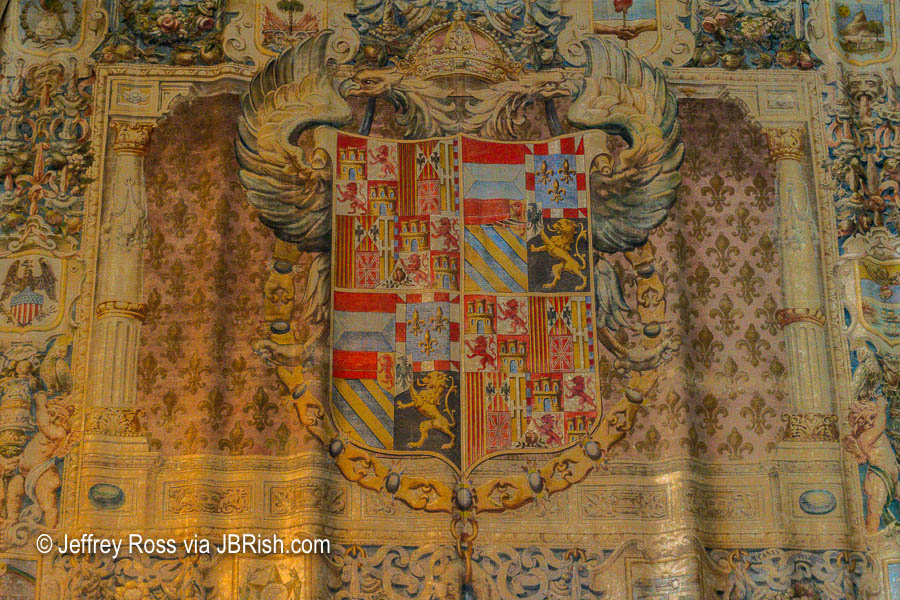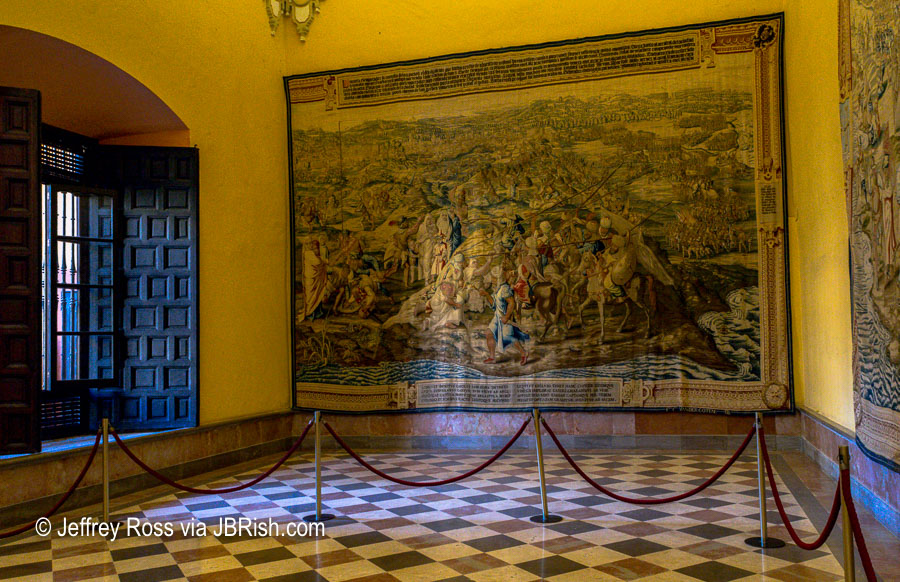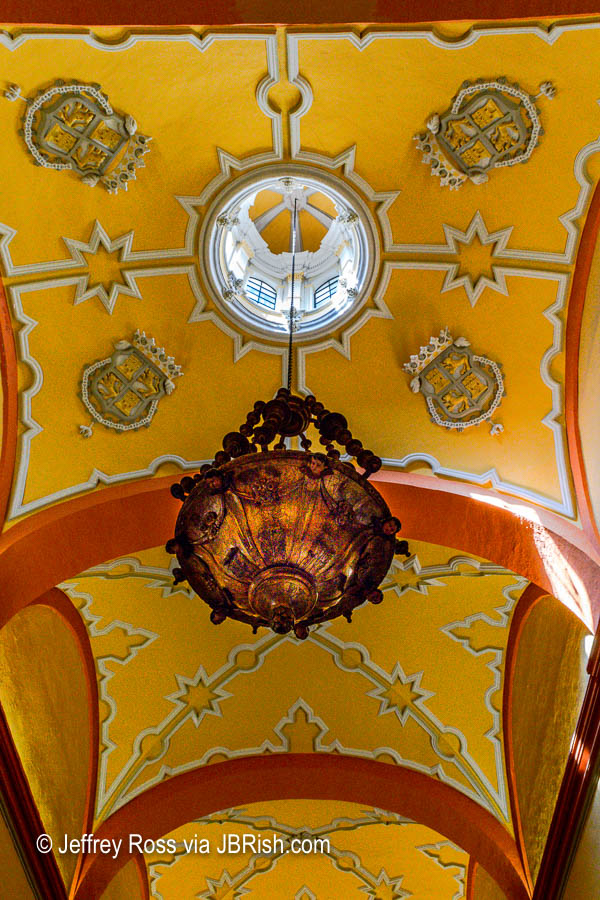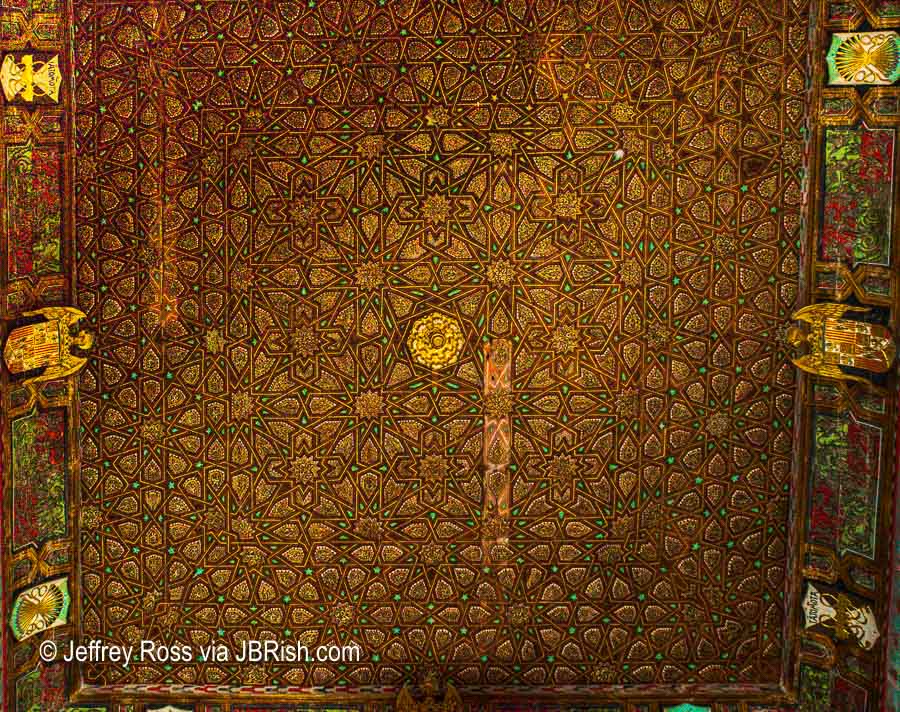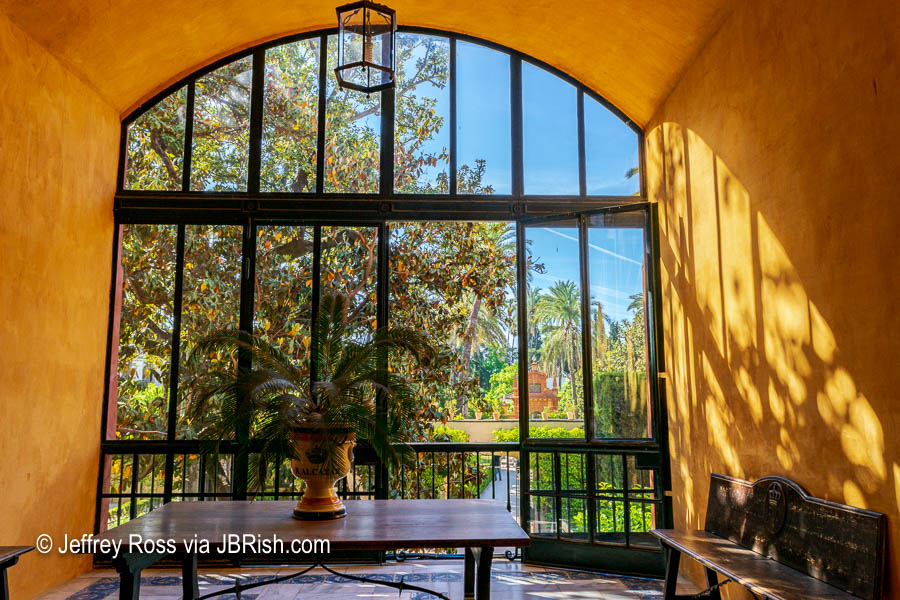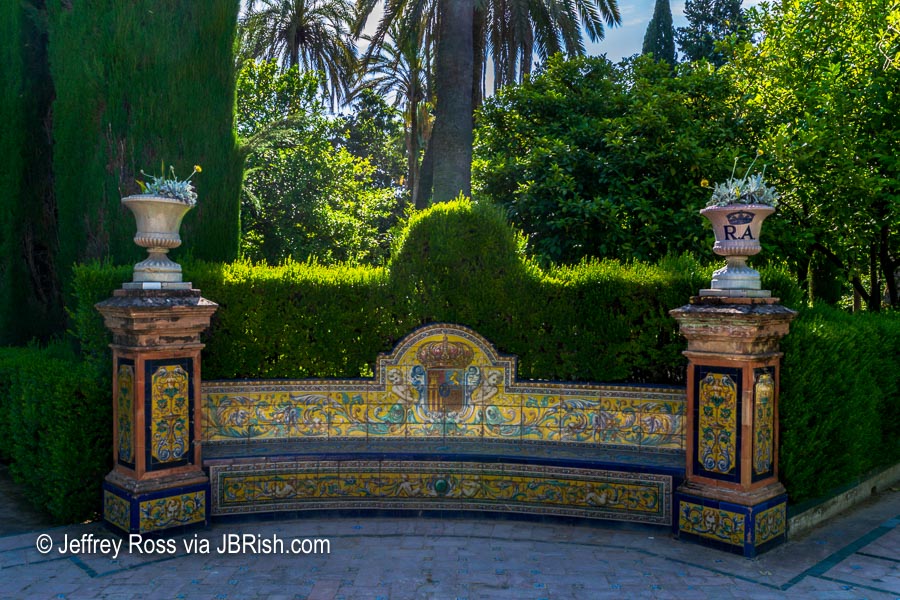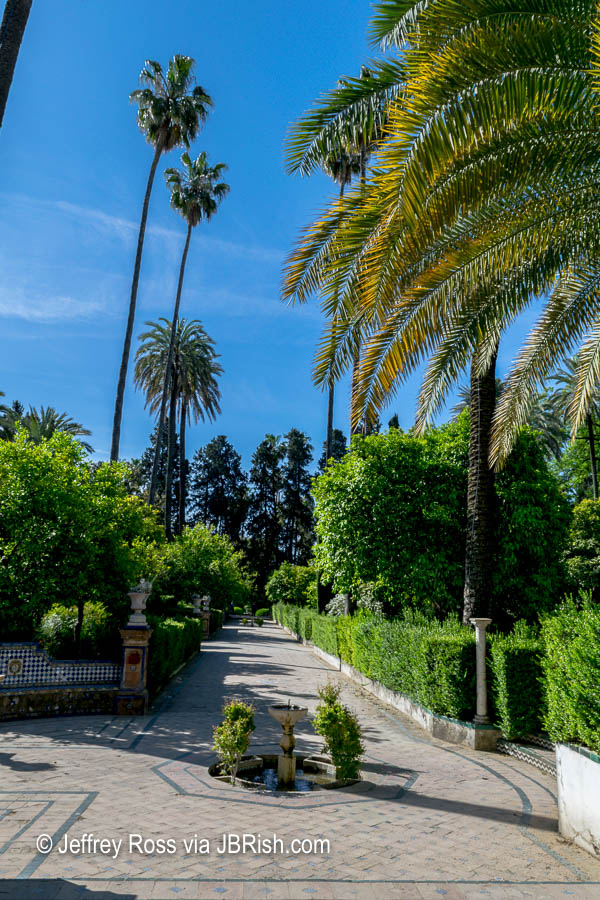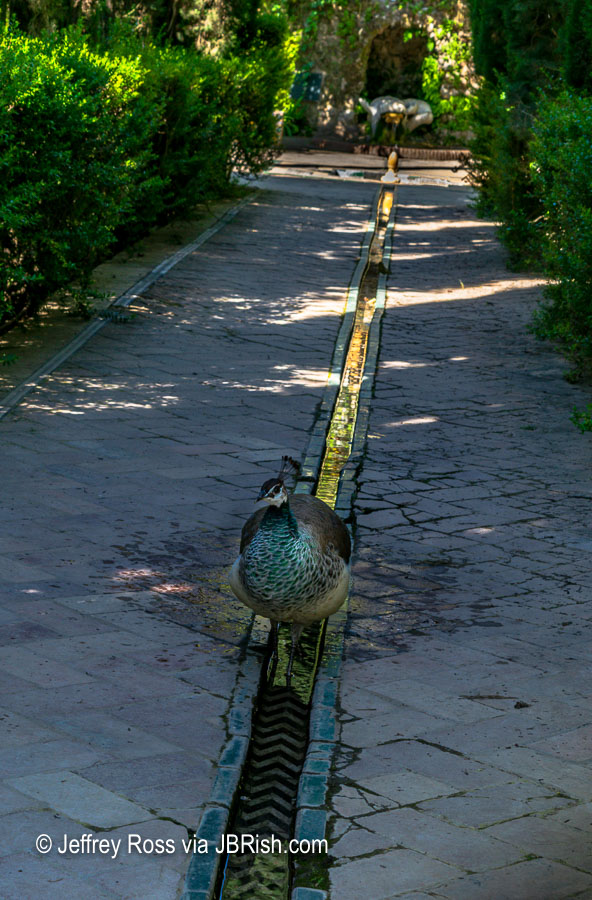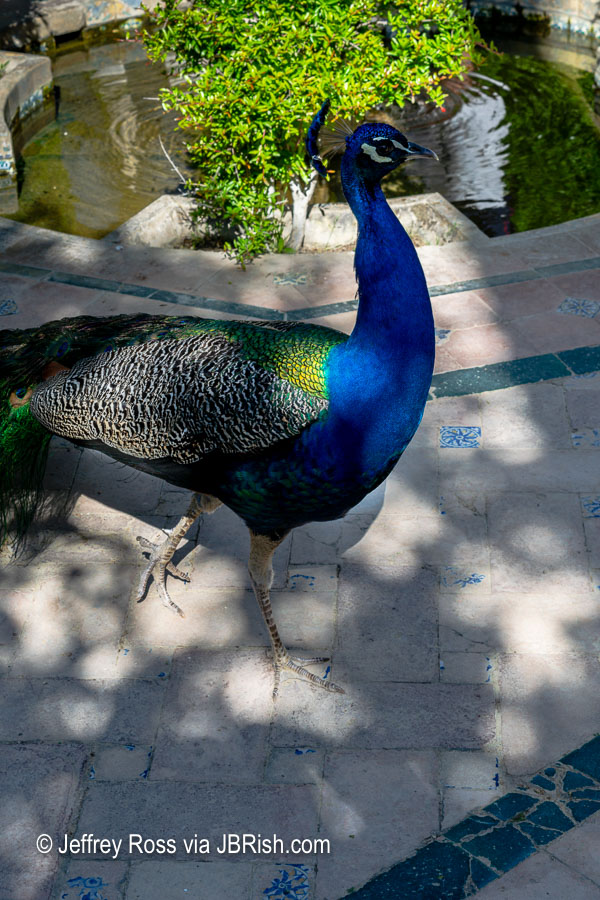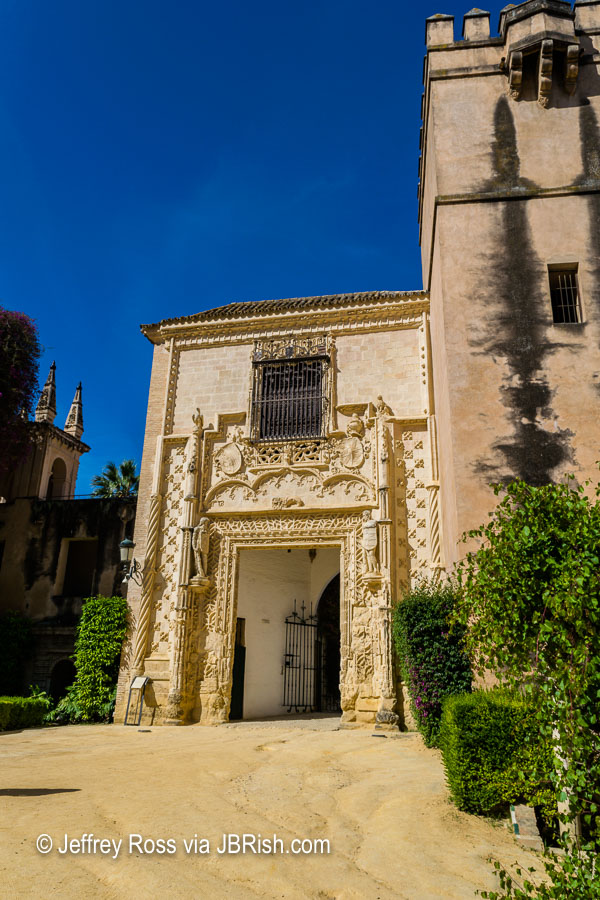Granada had a wonderful mixed ambiance of the old and the new which is very inviting, but after two days, it was time to move on to Cordoba for a very brief single-day stop. There would be no overnight stay, just a quick day of touring.
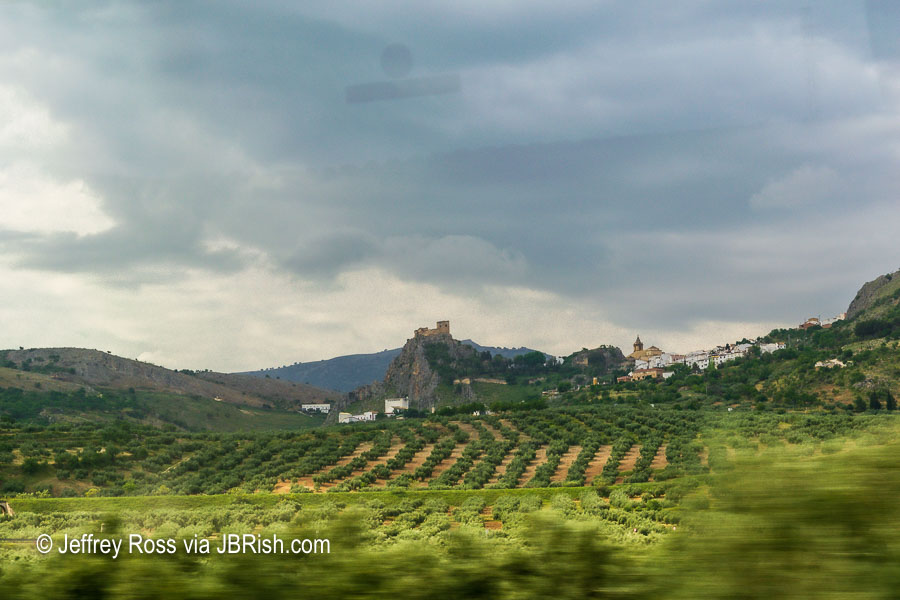
picture snapped through our speeding bus window
On the way, we traveled through Spain’s premier olive-growing region of Andalusia and of course we made a requisite stop at one of the local olive mills. There were plenty of products for sale and we acquired several tins of the famed olive oil as well as some decorative bottle stoppers.
The grounds had interesting artifacts. Whether they were originals or not, I had no way of knowing, but they were engaging just the same. The picture below is of a large urn for storing part of the season’s olive oil bounty. The metal wheels would most likely be parts of the grinding machinery used to crush the olives.
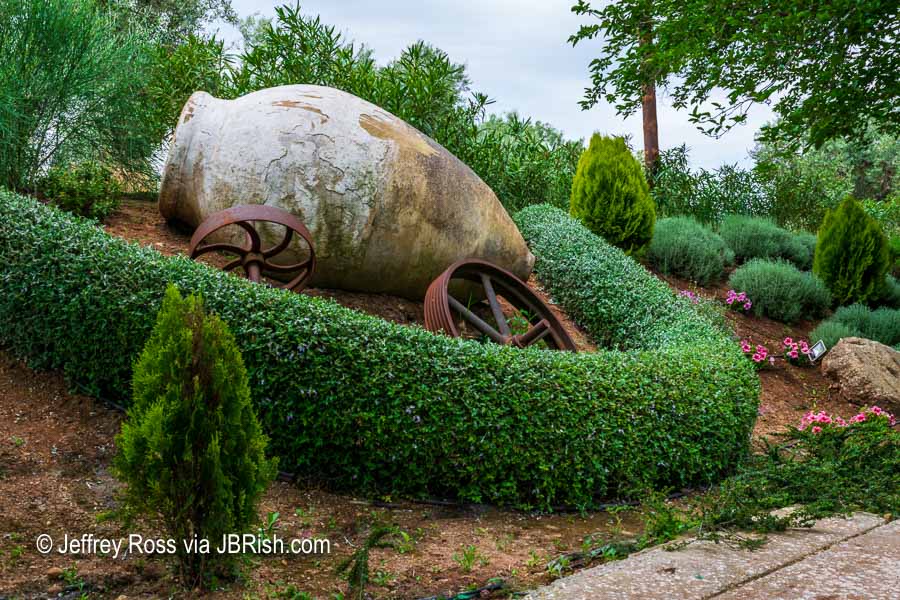
This is a view of the beautiful plantings. Notice the urn in the distance.
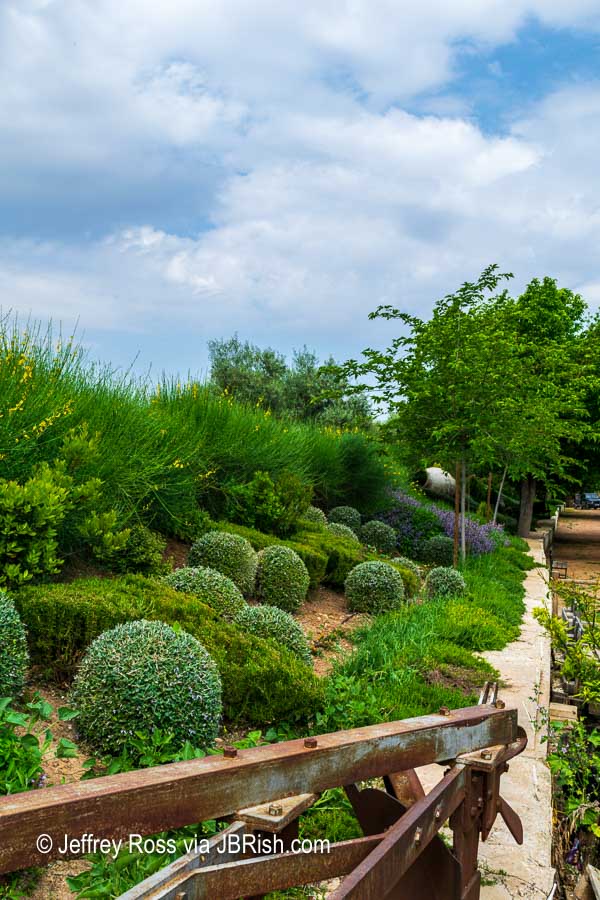
After our brief stop, we boarded the bus and arrived in Cordoba. We had a brief lunch and then enjoyed a walk through the historic part of the city which is a delight for anyone who enjoys the beautiful contrast of solid colored building facades (mostly white) generously punctuated with colorful flower-filled pots and planters.
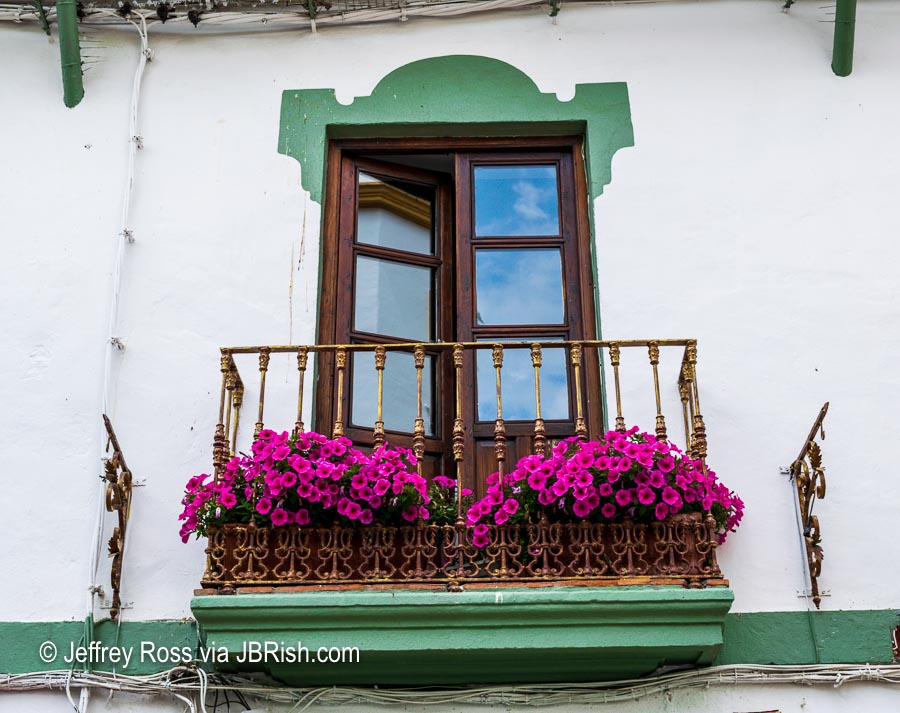
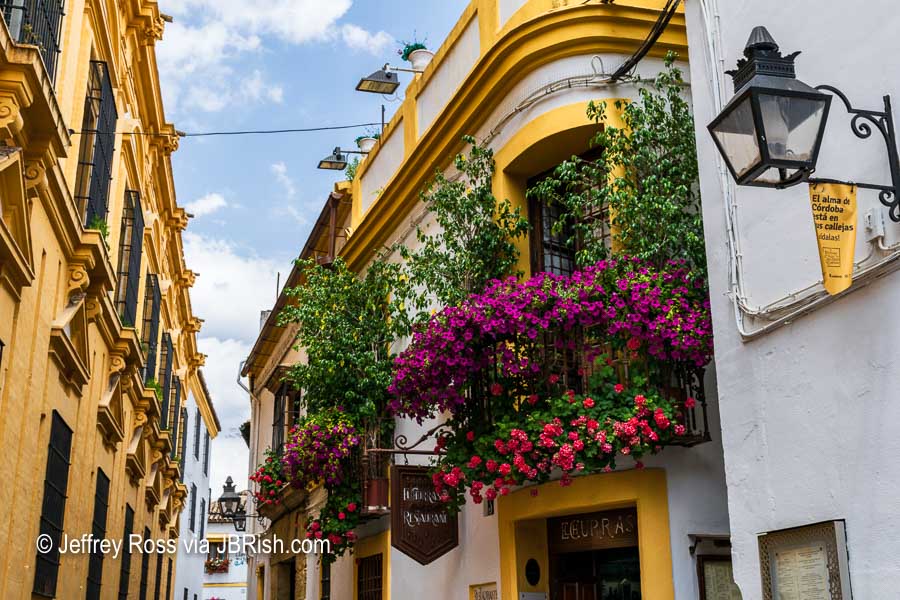
We also spent time wandering through city’s historic Jewish Quarter. Casa Pepe de la Juderia is one of the well-known restaurants in this part of town.

Markers were embedded among the paving stones to differentiate the Jewish Quarter streets.
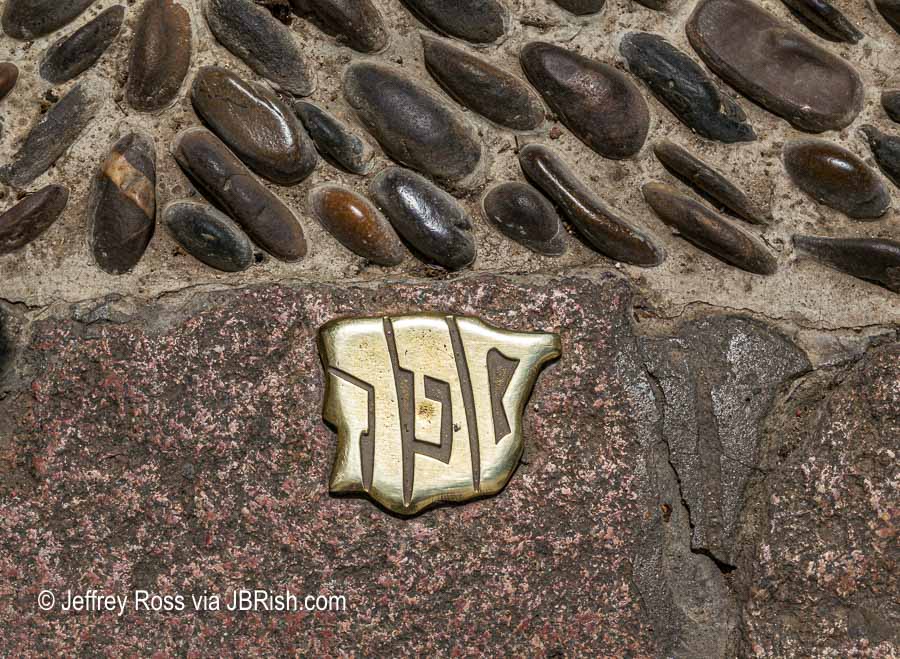
Towering over the center of Cordoba, and visible from many streets, are the towers of the Mezquita-Catedral de Córdoba (Mosque-Cathedral of Cordoba) which is perhaps the main draw for many tourists and adventurers. The structure is referred to as both a mosque and a cathedral because of its complex history.
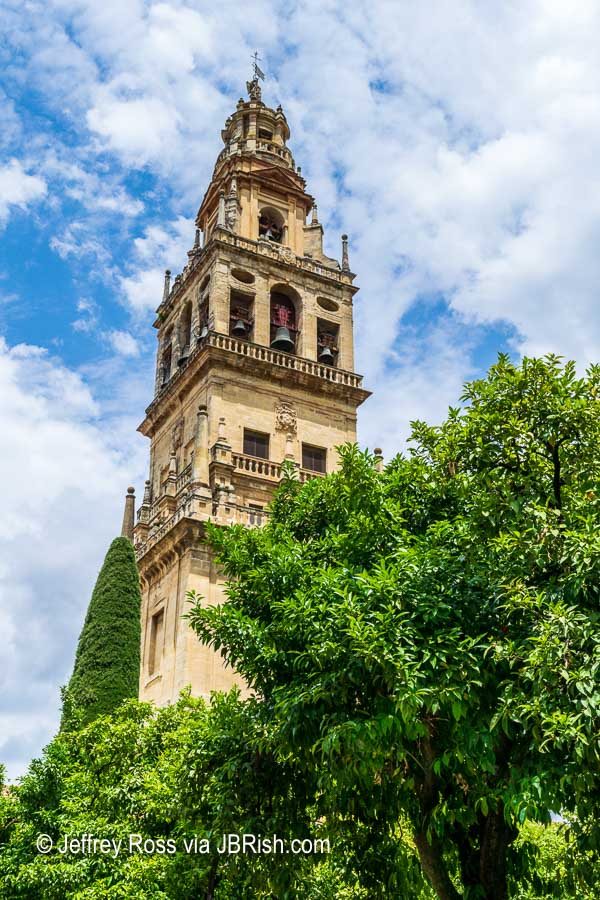
The Bell tower of the Mosque of Cordoba
The Torre del Alminar (Minaret Tower) has been converted to the Bell Tower with steps leading to the top for impressive views of Cordoba.
Even before entering the building, an examination of the beautiful exterior details revealed the uniqueness and the age of this Mosque. The nine entrances are referred to as gates; each with a distinct name. I believe this is the Gate of Holy Spirit Espiritu Santuto.
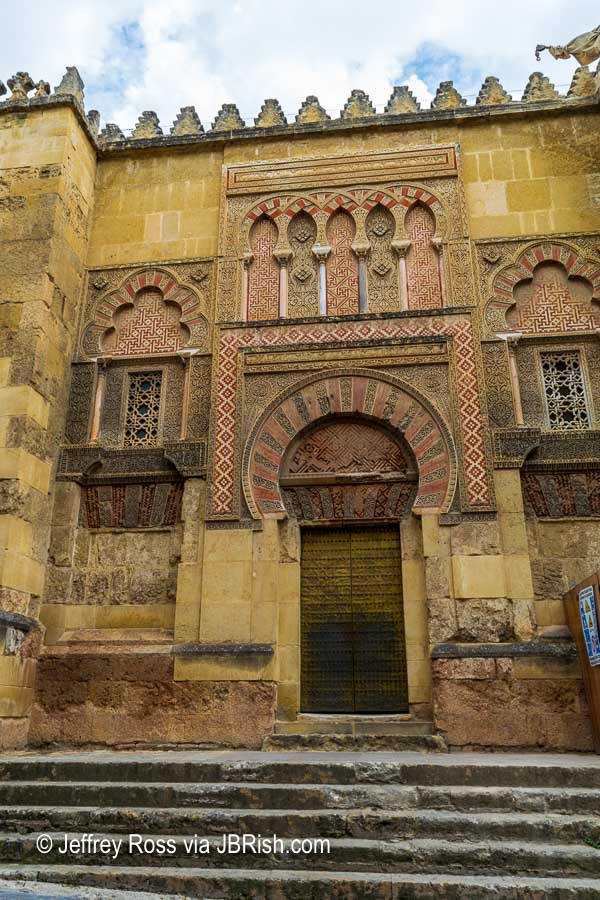
Our group began the tour by gathering in the main courtyard.
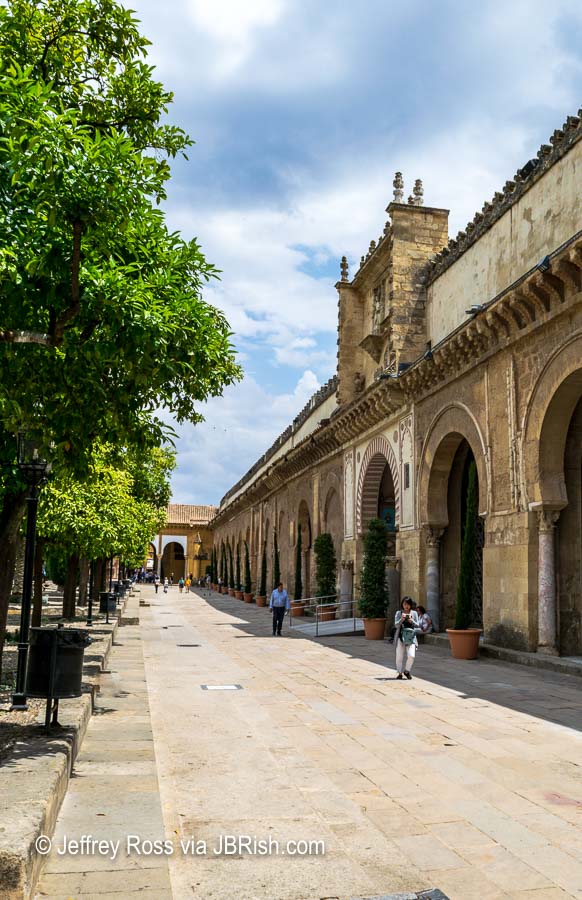
The Mezquita-Catedral de Córdoba – Which has a unique combination of Christian and Moorish architecture and religious cultures. The original structure had, for a time, dual occupancy with different sections being used by the Visigoth Christians and the Muslims, but was later destroyed to make way for a grand Mosque (Mezquita) constructed over a period of more than 200 years.
In the 13th century, the building was taken over by the Christians and converted into a church. **
** Source
There is a huge columnar prayer hall that is astonishingly beautiful because of the colors and the manner in which the light plays off the surrounding walls, ceilings and floors.
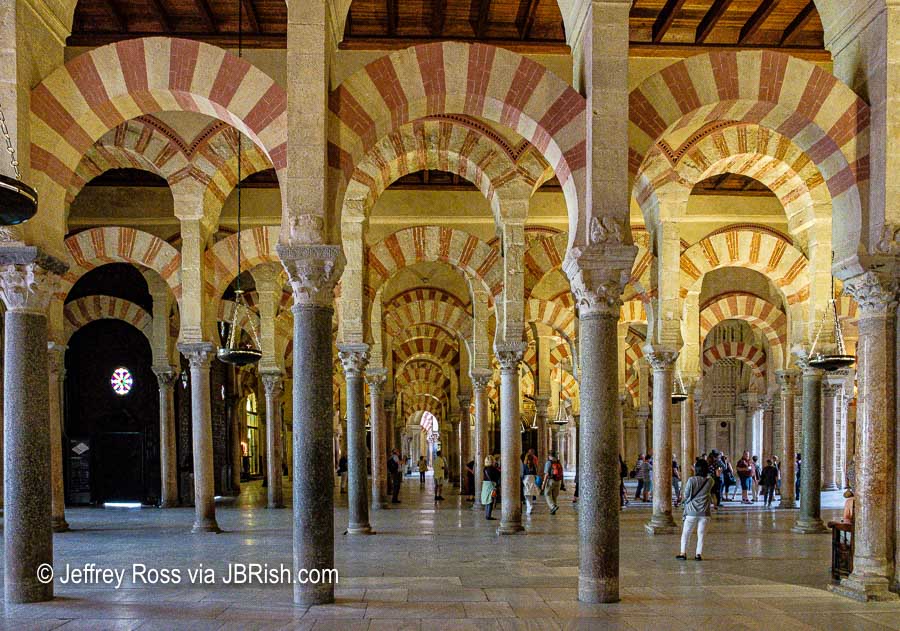
There are reportedly an excess of 800 columns supporting the structure.
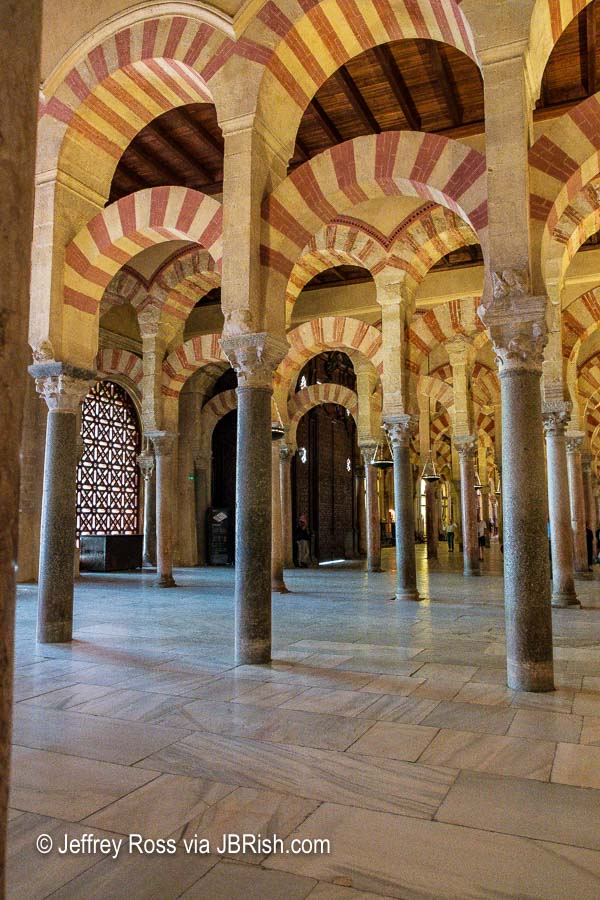
The picture below is particularly interesting because of the golden hue, the ornate carving and the hanging lights.
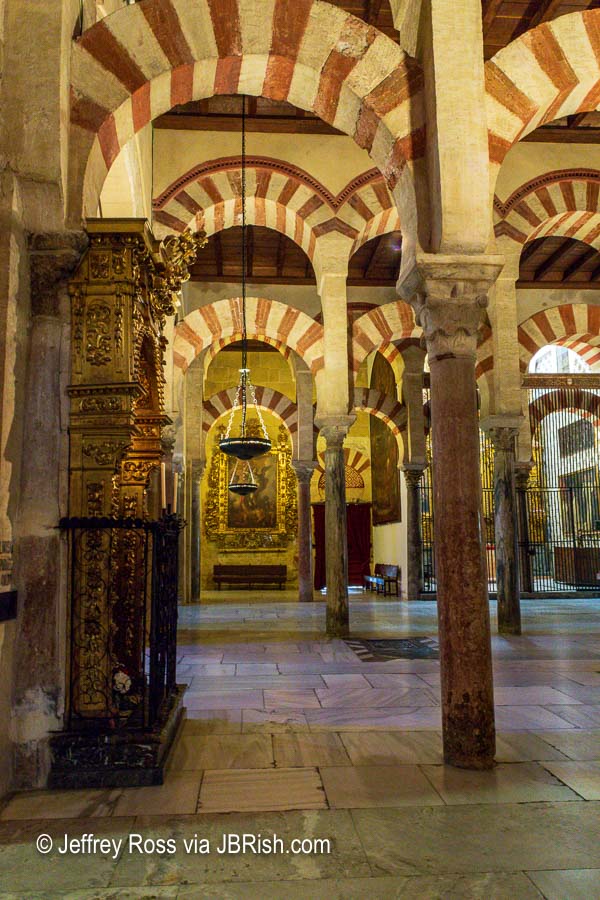
The focal point in the prayer hall is the unusual horse-shoe arched prayer niche or mihrab beautifully painted with exquisite detail. Gold-backed glass was used in the construction and provides some of the striking contrast.**

** Source
Wherever one looked, there was magnificence on display. The intricate arches were stunning.
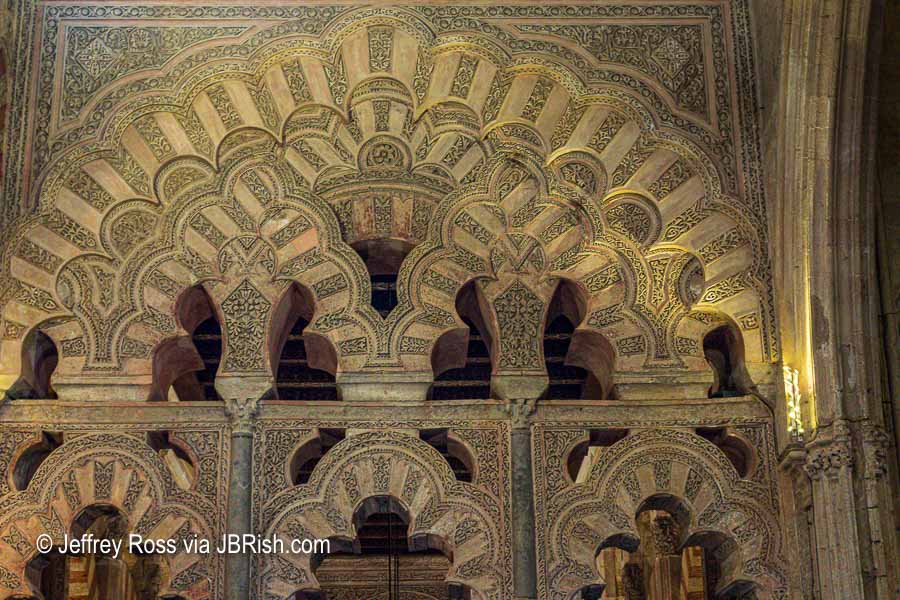
When the Christian rulers gained control of the structure, they took to the task of constructing the Cathedral of Our Lady of the Assumption inside the mosque. This is the High Altar of the main chapel.
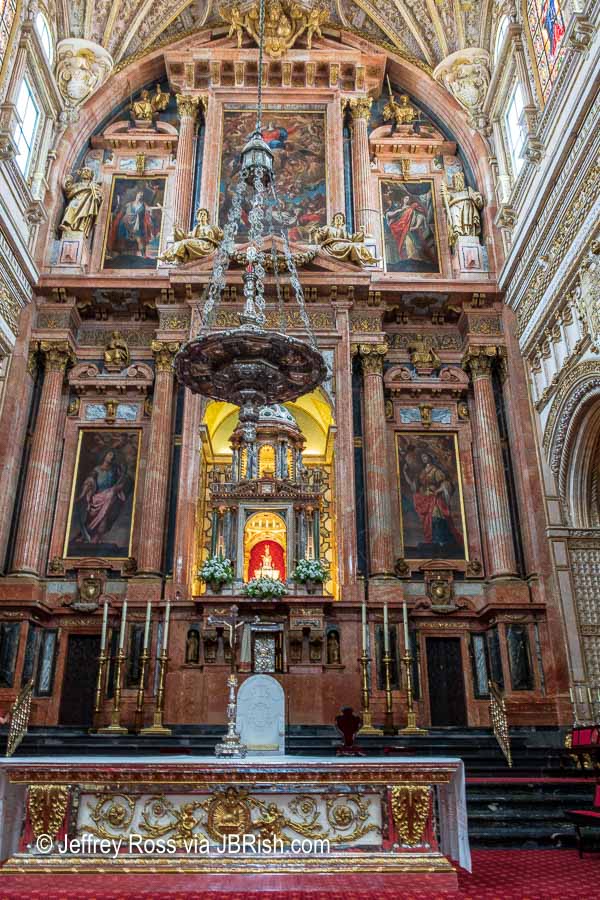
Not to be outdone by all of the detailed artwork of the mosque, the chapel dome is also very ornate…
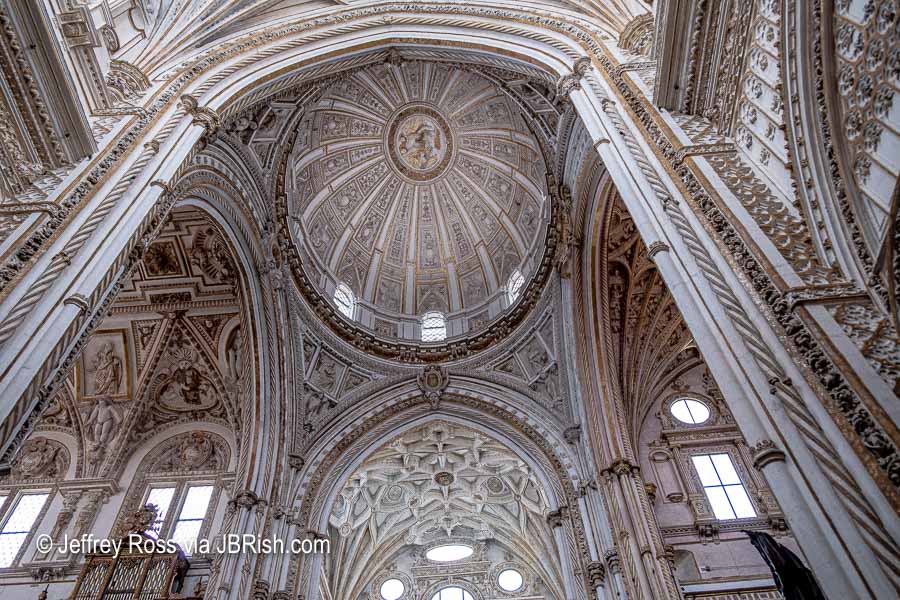
As is this nearby ceiling…

There is a Museum in the Cathedral of Our Lady of the Assumption where this gold and green artifact is on display.
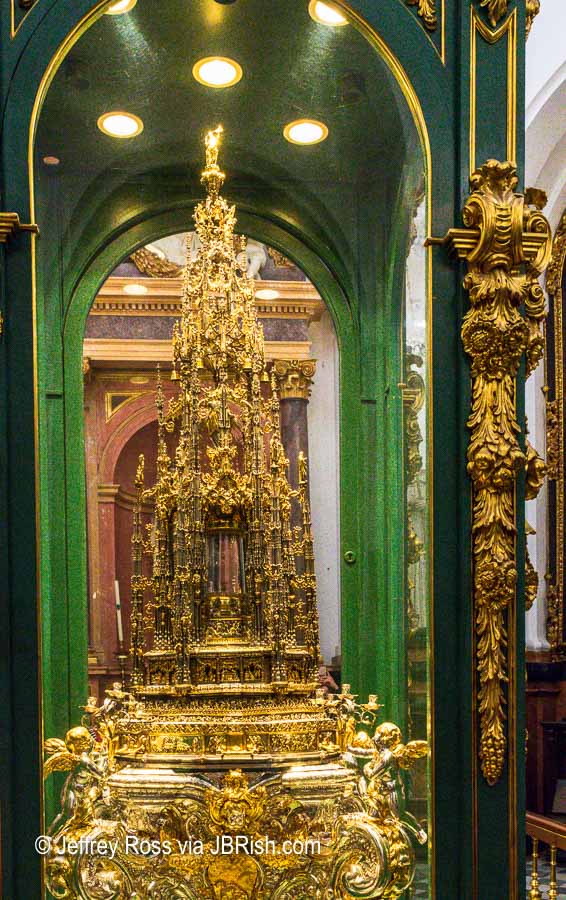
After our visit to the Mosque/Cathedral, we returned to the quaint streets of Cordoba with the mosque peering through the narrow skyscapes.
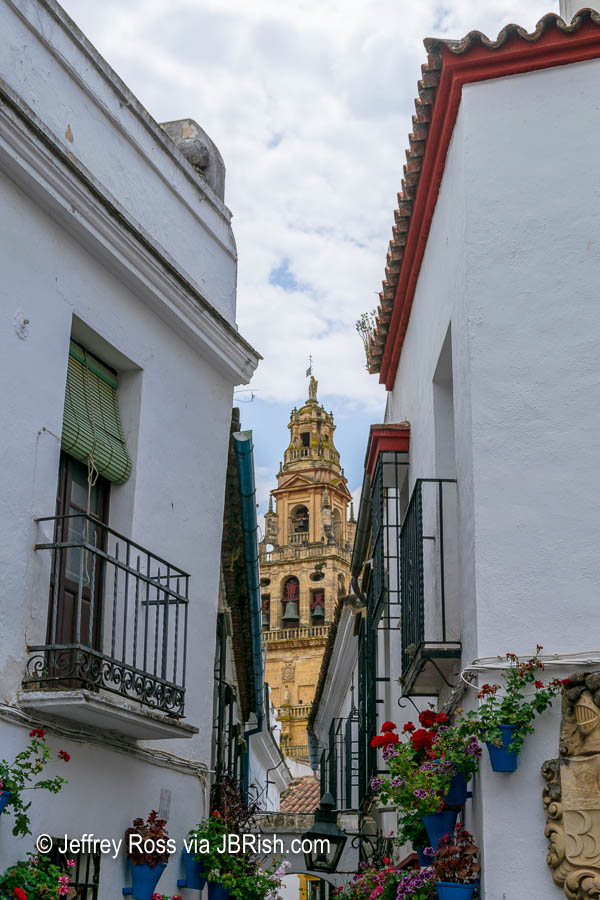
Cordoba is also known for its courtyards and during May, there is a courtyard festival:
Every year in May, the city of Cordoba in Andalusia celebrates its famous Courtyards Festival, a tradition which was declared a part of our Intangible World Heritage by UNESCO in 2012 and during which many of the courtyards or “patios” in the historic quarter are open to visitors for a few days. The festival is a competition to discover the most beautiful courtyards in the city, and fills the streets with colour, the scent of jasmine and orange blossom and the strains of flamenco.**
** Source
While this was not part of the festival when we were in town, it was an interesting, colorful courtyard that we were able to admire.
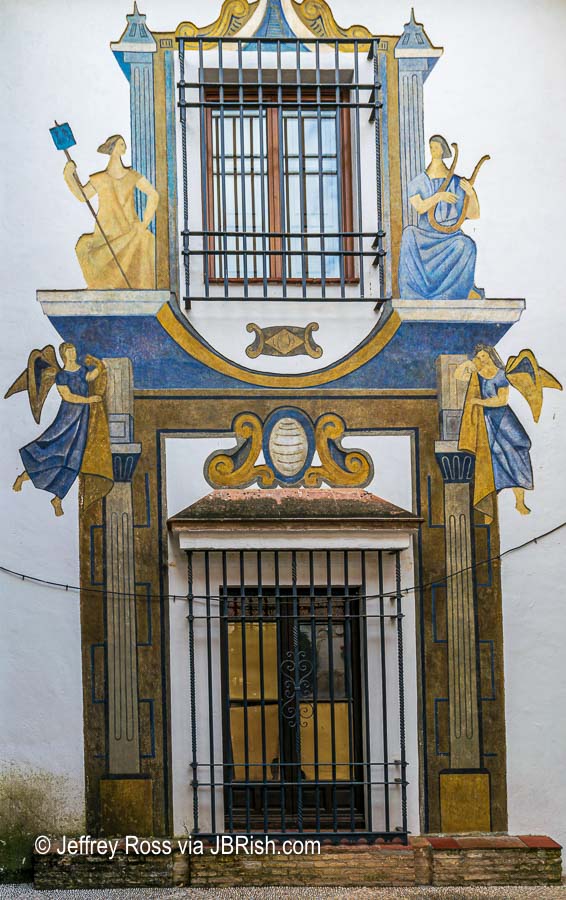
There was time for one last stop before we headed for the train station and I wanted to see the Roman Bridge (Puente Romano) and the Roman Arch Gate which is within easy walking distance of the Mosque.
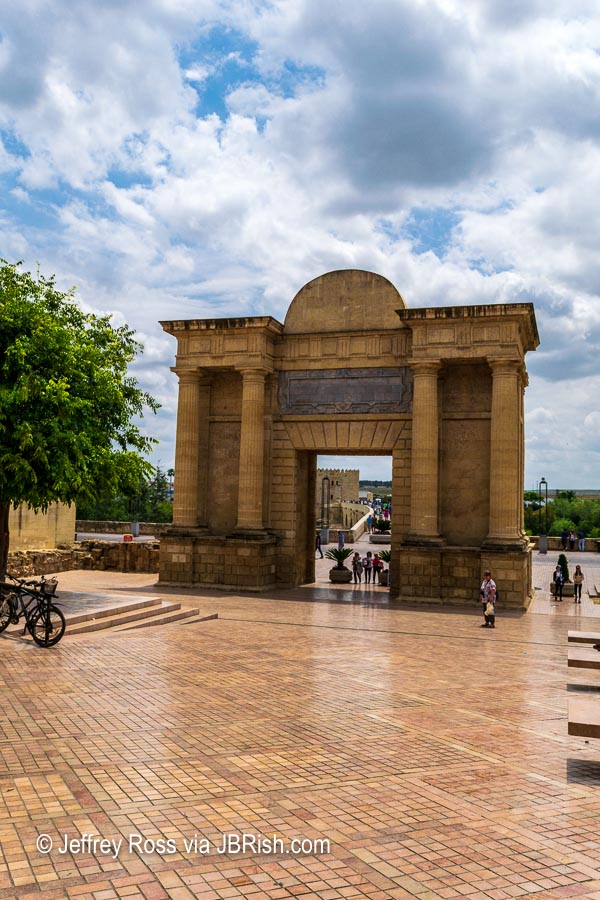
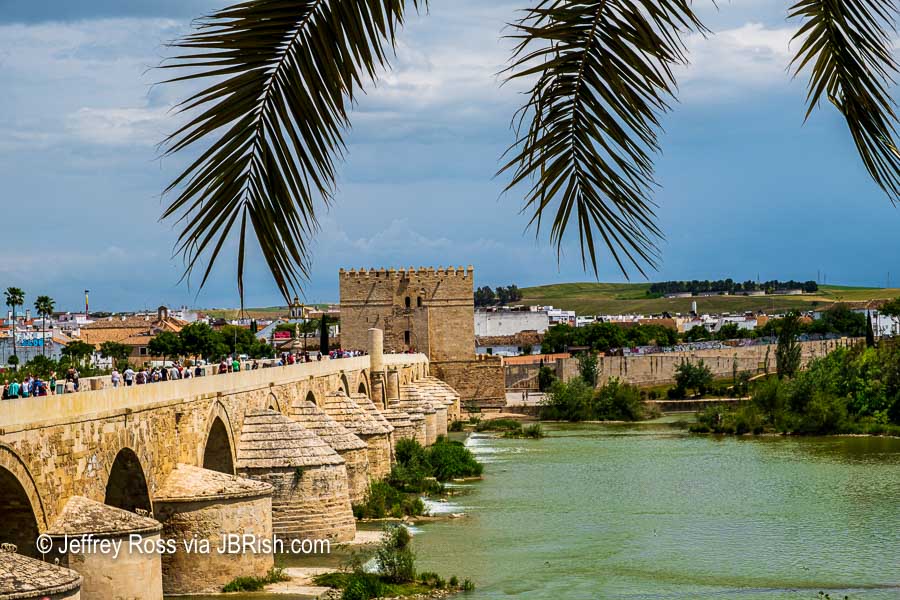
The afternoon shadows were growing long so we made our way to the train station in Cordoba to take the two-hour (+/-) ride to Madrid.
Members of our group served to create a Norman Rockwell moment.
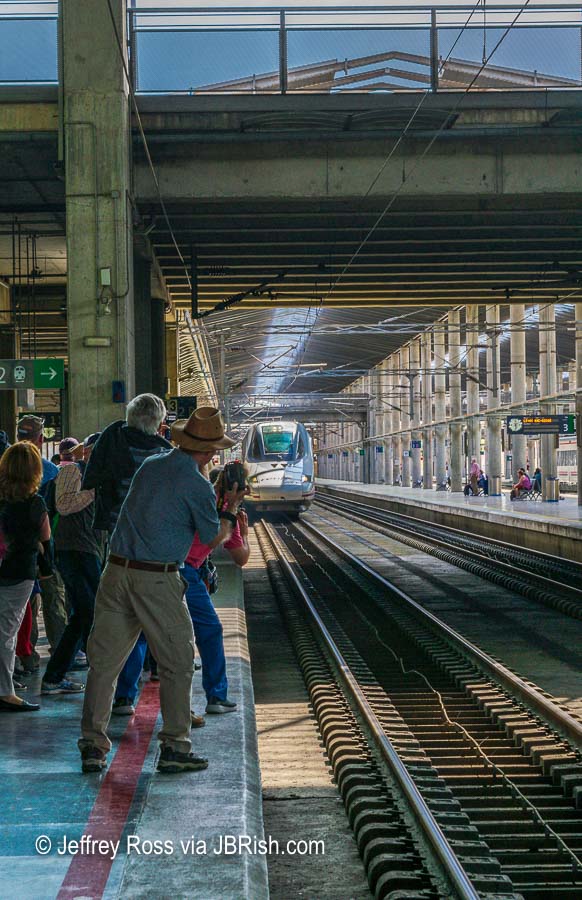
The bullet train was very sleek and fast! Next Stop Madrid!

**********
***************
Continue reading about our trip to Portugal and Spain.
Read more Hiking and Exploration posts HERE
**********
All original content on this blog is copyrighted by Jeffrey B. Ross with ALL Rights Reserved. While reference links back to JBRish.com are appreciated and encouraged, please acquire approval for any reproduction of original content from this website.
©Jeffrey B. Ross 2014 – 2019 – JBRish.com


